Mary has requested that the daily message be given each day to the world. It is
read nightly at the prayer service from her Image Building in Clearwater, Florida, U.S.A.
This is according to her request. All attempts will be made to publish this daily message
to the world at 11 p.m. Eastern time, U.S.A.
We acknowledge that the final authority regarding these messages
rests with the Holy See of Rome.
|
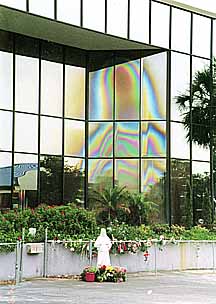 |
June 21, 2001
A Prayer for Intimacy with the Lamb, the
Bridegroom of the Soul
Oh Lamb of God, Who take away the sins of the world, come and act on my soul most
intimately. I surrender myself, as I ask for the grace to let go, to just be as I exist in
You and You act most intimately on my soul. You are the Initiator. I am the soul waiting
Your favors as You act in me. I love You. I adore You. I worship You. Come and possess my
soul with Your Divine Grace, as I experience You most intimately.
Messenger: Include Our Lady of the Holy Spirit Center in 6:20
prayers.
Messenger: Please pray for an important intention.
WE
DESPERATELY NEED FUNDS!
Please pray for 5 urgent intentions!
Pray for a special priest and Father
Mike,
Spread the Blood of Jesus on all involved, cast the devil far
away, ask for the special coming of the Holy Spirit in a special way
and consecrate all hearts to the Sacred Heart and Immaculate Heart.
| June 22nd Holy Spirit Novena
Scripture selection is Day 3 Period 1. |
The Novena Rosary Mystery for June 22nd is
Glorious. |
Messenger: We do not
have funds for rosary beads for rosary makers.
Please help us.
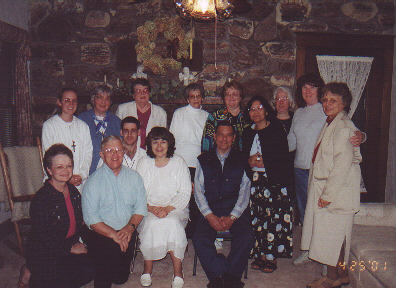
Rosaries in Iowa City -
6:20 PM (Iowa Time) June 22, 2001 - the
feast of the Sacred Heart
12:00 PM (Iowa Time) June 23, 2001 - the
feast of the Immaculate Heart
Call 1-888-211-3041 for information
June 21, 2001
Messenger: My dear Sacred Heart,
I love you so much.
My beloved Sacred Heart on fire for men help this
world.
My beloved Jesus, my Sacred Heart, come
to us and make us one.
Oh my beloved Holy Spirit fill our Hearts
with fire, that our hearts are full
of love for God and for all men.
Oh my beloved Father, I give myself to you
united to my beloved Jesus, I offer
myself, wholly and completely as
a sacrifice in the Holy Spirit.
My beloved God-Father, Son and Holy Spirit,
I want you to dwell so deeply, inside
of me.
My beloved God, I want to be saturated
with your grace, your life.
My beloved God, I want to know you, that
my heart thirsts after deeper knowledge of you.
My beloved God, I want to feel that deep presence
of you always with me.
My beloved God, I live to serve you.
My beloved God, I live to be possessed by God.
My beloved God, I want the deepest union with
you possible for all eternity.
My beloved God, I want oneness with you, now
and forever.
My beloved God, I want oneness on the earth.
My beloved God, I want this deep union with
all the saints, angels in heaven.
My beloved God, I want to be united to the souls
in purgatory.
My beloved God, I want to be so one with the
souls of the earth.
My beloved God, my greatest desire is to love you
more perfectly.
My beloved God, my great desire is to be as you
desire me to be so united to the souls here
in deep prayer.
My beloved God, I want the world to be as you
want it to be.
This is what I especially feel at Mass, this deep
connection, this oneness between
heaven and earth.
Excerpt
from Response in Christ
by Father Edward Carter, S.J. - Chapter 3
e) Relationship with
Members of the Church
There is but one true Church of Christ. Yet this one Church
has three different states of existence. There is the pilgrim Church, the
Church of this world, composed of members who have received the grace of
Christ and strive for its development. They have not yet obtained the goal of
their efforts, as have the members of the heavenly Church, who enjoy God in
eternal happiness. The Church suffering is an intermediate state of existence
necessary for those who had not achieved the required purification as members
of the pilgrim Church. Although there are these three phases of the Church's
existence, there is a profound union existing between all the members. All
these members possess the same basic life of grace in Christ, and this common
life establishes the most intimate bonds of love. In our preceding chapter, we
discussed the pilgrim Church. Let us now consider the Church suffering and the
heavenly Church.
The members of the Church suffering are those who have departed
from this life in an incomplete state of Christian development. Their
development is incomplete in the sense that grace has not fully taken
possession of them, and, as a result, they are yet closed in upon themselves
to a greater or lesser degree. They as yet cannot open themselves out in
complete love to the Triune God in the beatific vision. They must undergo a
further purification, a purification which could have been achieved upon earth
with merit. Now the purification must be achieved with no merit attached. The
pain of this purification is mixed with the certain expectation of achieving
the vision of God. We can hasten the advent of this vision for this people by
the offering of prayers and other good works. Scripture itself refers to our
action on behalf of those in purgatory in Chapter 12 of the Second Book of
Maccabees beginning with verse 38.
The members of the heavenly Church are those in whom the life of
grace has taken full possession and has reached its completion in the life of
glory. Faith now is unnecessary, as the light of glory gives the human
intellect a new strength and capacity for seeing God face-to-face. While the
Christian was a wayfarer, he received the imprint of the indwelling Trinity as
he shared in God's own life. Now in heaven that grace-life and possession of
God reaches its completionóthe absolute completion is not achieved, however,
until the resurrection of the body. The divine persons give Themselves to the
beatified in a profound union far surpassing that of the indwelling of the
Trinity experienced here below.
This life of heaven is still the Christ-life, for just as we
possess a share in Trinitarian life here below as mediated by Christ, and
exercise this grace-life as structured by Him, so also in heaven is the
mediation of Christ present. In the words of Rahner, "One always sees the
Father through Jesus. Just as immediately as this, for the directness of the
vision of God is not a denial of the mediatorship of Christ as man."13
And not only does the humanity of Christ unite the
blessed to God, but also, in some way, to the whole of creation. This is
merely a completion of what is begun here below, namely, the union with Christ
in His humanity establishing the Christian in a special relationship with God,
with other men, and with the whole of creation. We have a glimpse, therefore,
of the fullness of life which members of the heavenly Church possess.
The heavenly Church, as St. Thomas says, is the true Church.14
The Church of this earth and the Church of purgatory are, each in its own way,
reaching out in loving hope for the heavenly Jerusalem. Vatican II puts it
very simply: "The Church, to which we are called in Christ Jesus, and in
which we acquire sanctity through the grace of God, will attain her full
perfection only in the glory of heaven."15
The members of the heavenly Church can help us in living our life
of grace until we too share its fullness with them. Their power of
intercession on our behalf is but another ramification of the communal aspect
of Christianity. We are meant to help others grow in Christ. We, in turn, are
intended by God to receive aid from othersóyes, from members of the heavenly
Church, as well as from those with whom we dwell here below.
Not only can we be aided by the saints' intercession, but the
example of the canonized saints can also be of great value to us. They have
concretely proved that full holiness is possible. Such an inspiration
is of real worth when we are tempted to think that Christian sanctity in its
higher degrees is impossible of attainment. Moreover, the canonized saints, in
their diversity, teach us that there are many authentic versions of Christian
holiness. They can be innovators in showing us that there are numerous
possibilities in assimilating the mystery of Christ, although the basic
assimilation remains the same for all Christians of all times. In the opinion
of Rahner this is one of the chief roles the canonized saints exert in the
life of the Church.16
NOTES:
13Karl Rahner, Theological
Investigations, Vol. III (Baltimore: Helicon, 1967), p. 44.
14Cf. St. Thomas Aquinas, In Ad Ephes., c. 3,
Lect. 3.
15Second Vatican Council, Constitution on the
Church, No. 48.
16Cf. Karl Rahner, Op. cit., pp. 100-101.
end of excerpt from Response in Christ
June 21, 2001 message continues
Messenger: I do not write as a theologian, I write as a
mystic trying to express myself that
I can more fully write about insights
into the hidden mysteries.
I see the rosary so crucial and the meditation
of scripture connected with the mysteries
of the rosary.
The scriptures God has given us in these writings
are so crucial into understanding this
mission.
Today's first reading must be included here.
2 Corinthians 11: 1-11
Paul is driven to sound his own praises
I wish you would put up with a little foolishness from meónot that
you donít do this already. The jealousy that I feel for you is, you see,
Godís own jealousy: I gave you all in marriage to a single husband, a virgin
pure for presentation to Christ. But I am afraid that, just as the snake with
his cunning seduced Eve, your minds may be led astray from singleĖminded
devotion to Christ. Because any chance comer has only to preach a Jesus other
than the one we preached, or you have only to receive a spirit different from
the one you received, or a gospel different from the one you acceptedóand
you put up with that only too willingly. Now, I consider that I am not in the
least inferior to the superĖapostles. Even if there is something lacking in
my public speaking, this is not the case with my knowledge, as we have openly
shown to you at all times and before everyone.
Have I done wrong, then, humbling myself so that you might be raised up, by
preaching the gospel of God to you for nothing? I was robbing other churches,
taking wages from them in order to work for you. When I was with you and
needed money, I was no burden to anybody, for the brothers from Macedonia
brought me as much as I needed when they came; I have always been careful not
to let myself be a burden to you in any way, and I shall continue to be so.
And as Christís truth is in me, this boast of mine is not going to be
silenced in the regions of Achaia. Why should it be? Because I do not love
you? God knows that I do.
June 21, 2001 message continues
Messenger: Today I would like to say we need $9,000 to
mail
the priestly Newsletter to the priests
in
the U.S.
We
need lots of money for the foreign mailing,
we
have worked out a payment plan
from
the last mailing, hoping the
money
would come.
Father
Carter has helped so many priests with
the newsletter.
Jesus
has written this Newsletter for over six
years through Father Carter.
This
message was given to Father Carter the
end of May 1994.
He
was told to send it to every priest
in the United States.
He
did this, can you imagine how this
has effected the lives of our priests.
We
have operated on donations all this
time.
Soon
the Newsletter was extended to the
priests internationally and it
was translated and sent in
Spanish.
All
this has been done by donations.
Last
year it was so hard on Father Carter
because after he wrote the 20 page
Newsletter as Jesus directed him,
we had no money.
The
Newsletter has majorly effected the world.
Father
wrote this plea in his last Newsletter
published while he was alive.
He asked for funds.
Here
is what he wrote, it was last summer.
Father Carter's cry for money
from Newsletter 2000 issue 4,
the last Newsletter published while he was alive
CAN YOU HELP US?
As you know, we
distribute the Newsletter free of charge. We have been publishing the
Newsletter for six years. Although the fine print on the last page of each
Newsletter says that donations are always welcome, we have, to this date, only
made one major appeal for donations.
Now we come to you again
and ask for your financial assistance. It is considerably expensive to print
the Newsletter and to mail it here in the U.S.A. and to other countries around
the world. With our English and Spanish editions, we send the Newsletter to
readers in about 90 countries. We soon hope to add a French edition.
With the help of Godís
grace, the Newsletter seems to be accomplishing much good. The numerous
letters we receive from around the world regarding the Newsletterís
helpfulness are one indication of this.
If you share with us our
belief that the Newsletter is a very worthwhile ministry, we urgently ask you
to seriously consider sending us a donation. We are always struggling to
obtain the funds to continue publication of the Newsletter.
If you are financially
able, we would be extremely grateful to receive your donation -- whether it is
small, large, or medium-sized! We thank all of you who have previously sent
donations.
Some of you may know of
possible benefactors who would be interested in helping a worthy cause. And we
firmly believe that a ministry which offers an aid for spiritual growth to
priests especially, but to others also, is a most worthy endeavor.
For your convenience, we
have enclosed a self-addressed donation envelope.
Very importantly, we also
ask for your prayers that we may obtain the funds necessary to continue
publication of the Newsletter and that the Newsletter will be spiritually
beneficial to its readers. We hope to continue to publish it four to six times
a year. The number of issues will depend upon various factors. Thank you very
much for your attention to our urgent plea.
end of excerpt from the Newsletter
June 21, 2001 message continues
Messenger: Shortly
after that he was opened up and found
out he had cancer.
Exactly
3 months to the day was his funeral.
Exactly
6 months from that day is the feast
of the Sacred Heart, June 22, 2001.
The
call Jesus gave to Father Carter was to
fill the priests with His special
writings in the Newsletter.
Jesus
directed Father Carter exactly what
to do with the Newsletter.
The
Newsletter is a gift from Jesus.
The
Newsletter was directed by Jesus
through this humble Jesuit priest
so dedicated to His Sacred Heart.
Father
Carter published 33 Newsletters
while he was alive.
Father
Carter wrote the last 33 years of
the second millennium.
Father
Carter was told specifically to
write these Newsletters and send
them to the priests.
Father
Carter was given messages from
Our Lord to do this.
Here
is Jesus as he appeared February 5, 2001.
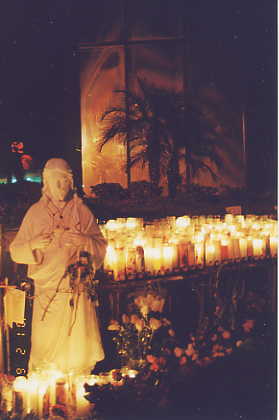
February 5, 2001
June 21, 2001 message continues
Messenger: Here
is how Jesus appeared on July 5, 2000.
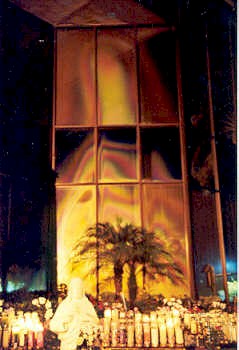
July 5, 2000
June 21, 2001 message continues
Messenger: Father Carter celebrated a private
Mass that day in the Virgin Mary
building.
That
night was the first time we were
able to photograph Mary appearing
in gold on the building.
I
never saw Jesus in the bottom
two left panels, but He is there
in that July 5, 2000 photo.
On
July 5, 1998 Father Carter consecrated the
world to the Sacred Heart and the
Immaculate Heart.
On
July 5, 1994, Mary first appeared to me
at Our Lady of the Holy Spirit Center
and appeared for 14 months daily.
She
continued to appear on the 5th of
the month for about two and 1/2 years. On
the 2 1/2 year anniversary Jesus appeared
instead of Mary hanging on the cross
12 days later Mary appeared in Clearwater,
Florida on the building.
We
received the building on almost the last
day of the year after we had leased
it for about 2 1/2 years.
Father
Carter died almost the end of the
second millennium right before
Christmas.
On
this feast of the Sacred Heart June 22, 2001
Our Lord wishes His Newsletter
2001 #2 to appear.
Please
help us receive the money to send it
to the priests.
To
appear June 22, 2001
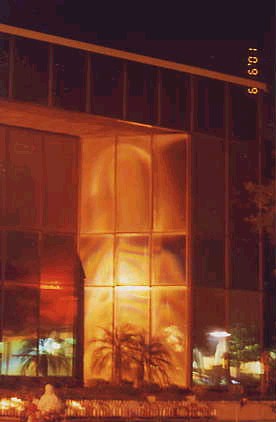
June 5, 2001
at the end of the prayer meeting

February 5, 2001
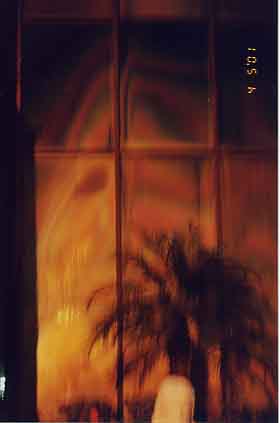
April 5, 2001
June 21, 2001 message continues
Jesus speaks: My beloved souls,
My Newsletter is a gift I send to My priests
to help them to grow in a deeper love union
with Me. It is My Spiritual Newsletter.
Please pray for My Newsletter. Your world
and your Church has majorly been
touched through My Newsletter. It is
to help bring to completion the mission
My Mother began at Fatima.
I beg you on this day of My Sacred Heart to
help Me to circulate My Newsletter
to the world.

February 5, 2001
June 21, 2001 message continues
Jesus speaks: I beg you to help to publish the Priestly Newsletter Book II
to send to My 75,000 priests in
the world that now receive the Newsletter.
I beg you to help Me to reach My priests
with My Newsletter.
Included is the Newsletter I give to you today.
I desire this to go to My priests.
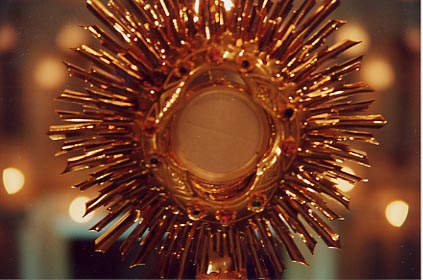
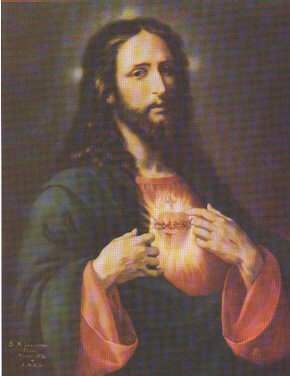
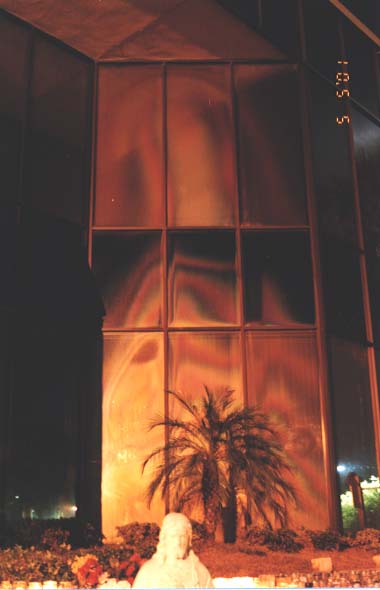
May 5, 2001
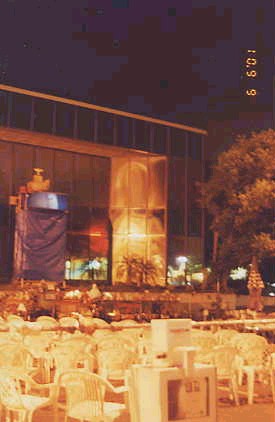 |
 |
| June 5, 2001 |
June 5, 2001 |
June 21, 2001 message continues
Jesus speaks: Do you ignore My sign?
What more proof do you need?
When you ignored Mary at Fatima you
suffered World War II.
I have attempted to reach you through
My two witnesses Father Carter
and My messenger, you will
not listen to Me.
You do not even hear My voice in the writings.
You are so focused on the authenticity that
you do not even see Mary appear
on the building.
You do not see Me appear on the
building.
You do not even recognize the fruits.
The only efforts being made from My
gift given have been to
block Me.
You do not block the messengers,
you block Me.
Your ears are closed.
Your eyes are closed.
And you will not even recognize
a sign as this from God.
The Shepherds of Christ Movement is
My Movement.
I am Jesus, the Son of God, I have appeared
and you ignore Me.
I have cried to you for help to circulate the
pictures.
I have cried to help Me get My Newsletter
in the hands of My priests.
My Mother has cried for the rosary beads
to be in the hands of her
children.
All the money in the world and you do
not see that you have made
money your god.
Message when My Mother first appeared
December 19, 1996.
December 19, 1996 Message from Mary
Mary speaks: My dear children, I give to you, my Son,
Jesus, born in a stable in Bethehem on Christmas morn'. He is the Almighty God,
the Light of the World.
I appear to you, my children, on a (former) bank in Florida. You have made money
your god! Do you know how cold are your hearts? Your money is your god.
I am Mary, your Mother. I do not appear as I once appeared to you. I am asking
you today to circulate my message given on a tape on the feast of Our Lady of
Guadalupe, December 12, 1996. Please circulate this tape now. Give it to as many
people as you can. I am Mary, your Mother. Please circulate my Rosary
Book.
end of December 19, 1996 message
June 21, 2001 message continues
Jesus speaks: I am sad on the Feast of My Sacred
Heart
for you have blocked My mission
to help to bring about the Reign of
My Sacred Heart.
You have used the gifts I have given,
you have profited by the constant
prayer of the Shepherds of Christ,
but you have persecuted and
blocked My Mission.
You do not even hear My Voice in
My writings.
You do not even recognize Our
Images on the Building.
My people in foreign lands suffer.
My people in Africa want to pray and
you in the wealthy land won't
share your wealth or even
help the starving. You will not
even help with the postage to send
rosary beads and prayer books
to Africa and Brazil as I have
requested.
Mary appears in the United States in
Clearwater, Florida and you ignore
her.
I appear now and tell you this is
a sign the Shepherds of
Christ is My Movement and
you tell Me it is not God.
I am sad - do you see My face?
I want a world that obeys the
commandments.
I want a world that loves God.
I want a world that puts God
first.
I want to be the King and Center of
all hearts.
I give you My Church, My bride.
You My special spouse, I
love you so much.
How does God reach you
with a message?
On December 5, 1996 -
12 days before
Mary appeared in
Clearwater, Florida,
I appeared on the cross with My mouth
moving at the point of
death because no one was listening.
Mary appeared as a messenger and appeared
on the 5ths but you would not listen,
after 2 1/2 years I appeared
December 5, 1996. When Mary appeared
12 days later with such a vivid
sign and the message you have
made money your god - you
think you would have
listened.
Now so many years
later, I appear and you
still will not listen.
Message of October 8, 1997
Entitled: Seedless, Barren, No Fruit on the
Vine
Jesus speaks: ...I did not put you
on the earth and then leave you to yourselves. I dwelt amongst you to guide
you in all your ways and the people today spit on Me as they did 2,000 years
before. For all these years I waited for the likes of you, My people, and why
should you have more time for false joy? Joy is not in the molten calf. It is
in the words of the Savior...
end of October 8, 1997 message
June 21, 2001 message continues
Jesus speaks: I cry to you on this the Feast of
My
Sacred Heart.
This is a sign, will you listen?
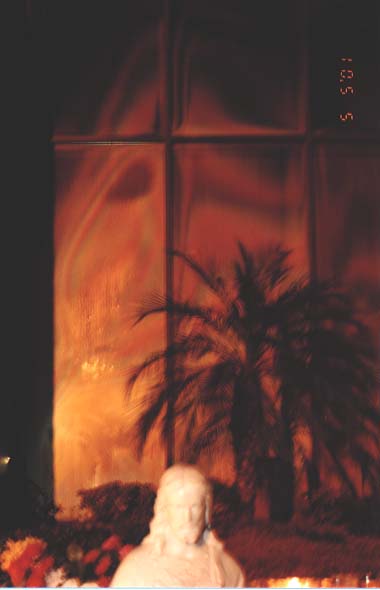 |
 |
|
May 5, 2001 |
May 5, 2001 |

June 5, 2001
June 21, 2001 message continues
Jesus speaks: Will you help me
circulate My Newsletter
given to help to bring about
the Reign of My Sacred Heart?
Will you help Me circulate My
Prayer Manual?
Will you help Me to get rosaries in
the hands of all the children and
the meditations for the rosary We
give.
Will you say the Say Daily card?
June 21, 2001 message continues
Jesus speaks: Please help Me. I cry to you
for the sake of My
precious souls.
This is a message
from the
Sacred Heart,
I am Jesus,
Chief Shepherd of the
Flock.
John 10: 11-15
I am the good shepherd: the good shepherd
lays down his life for his sheep. The hired man, since he is not the shepherd
and the sheep do not belong to him, abandons the sheep as soon as he sees a
wolf coming, and runs away, and then the wolf attacks and scatters the sheep;
he runs away because he is only a hired man and has no concern for the sheep.
I am the good shepherd; I know my own and my own know me, just as the Father
knows me and I know the Father; and I lay down my life for my sheep.
Original
Newsletter Format
- Download the free
 software. software.
- Click on the
 symbol to download.
symbol to download.
|
Shepherds of Christ
A Spirituality Newsletter for Priests
and Others Interested in the Spiritual Life
CONTENTS
The
Church is the Bride of Christ
God
With Us
The
Eucharist
Spirituality
Handbook
Our
Time Here is So Short
Spouse
of the Lamb
The
Sacraments and the Mass
1.
The
Sacraments in General
2.
The Mass
a) Sacrifice in General
1) Interior Oblation
2) Exterior Offering
3) Immolation of the Victim
4) Acceptance of the Sacrifice by God
5) Partaking of the Sacrificial Victim
b) Christ's Sacrifice
1) The Interior offering of Our Lord
2) Ritual Oblation
3) Immolation of the Victim
4) The Father's Acceptance of Christ's Sacrifice
5) The Banquet in Christ's Sacrifice
c) The Sacrifice of the
Mass
1) Interior Oblation of the Mass
2) Ritual Oblation of the Mass
3) Immolation of the Victim
4) The Father's Acceptance of the Eucharistic Sacrifice
5) Partaking of the Eucharistic Meal
d) The Christian's
Participation in the Mass
1) The Baptized Christian and the Mass
2) The Mass lived out
Uniting
Our Hearts to the Mass
Prayer
Chapters
Act
of Consecration
Prayer
for Priests
Notes
Masthead
|
THIS
NEWSLETTER IS AVAILABLE ON CD AND CASSETTE TAPE.
|
|
Father Carterís
Mission: Newsletters,
Prayer Chapters, and Spiritual Renewal
A primary purpose of the Shepherds of Christ
movement is to distribute this newsletter to priests and to begin
prayer chapters praying for the priests throughout the world in all
their needs and praying for the renewal of the church and the world. A
coequal purpose is to provide a spiritual way of life for people
interested in the spiritual life.
Father Carter edited this newsletter on October 20,
2000. His desire Ė this newsletter include the chapter from his book
Response in Christ on the Sacraments and the Mass. Again this
powerful writing is available on CD and cassette tape read by Father
Mike Paraniuk. All of the newsletter is available on tapes and disks.
A great help to the spiritual life is the prayers Father Carter gave
to us for the priests and the renewal of the Church and the world.
These prayers are available. Father Carter prayed them himself with
great fervor and love. They are available on both cassette tape and
CD.
The Shepherds of Christ Newsletter is currently
being translated into Spanish, French and Portuguese. The prayers the
people pray in prayer chapters were given by Fr. Edward Carter S.J.
They can be found in the Shepherds of Christ Associates prayer manual.
They have been translated into Spanish, French, and Portuguese. All
these prayers have the Imprimatur. Prayer manuals are available free
of charge. Newsletters and tapes of Father Carter delivering the
newsletter are available free of charge.
The English and Spanish newsletter goes to
approximately 75,000 priests and 8,500 religious. Internationally,
over 245 bishops and 4 cardinals have requested it for their diocese.
Funds are needed to help us distribute the newsletter to 90 foreign
countries in the world.
The second Newsletter
Book (with the Imprimatur) is completed and ready for
publication. This includes the newsletters of Father Carter from
September/October 1996 to Issue 5, 1999. Funds are needed for
publication. This too will be distributed worldwide to priests and
bishops and others interested in the spiritual life. A Spanish version
of 12 (July/August 1997 to Issue 5, 1999) of the newsletters in book
form will soon be available. Please help us in any way you can to
distribute the newsletter. Help us by beginning prayer chapters,
praying for the priests and the renewal of the Church and the world.
For more information to order tapes or prayer manuals call or write us
at:
Shepherds of Christ
Ministries
PO Box 193 Morrow, Ohio 45152-0193
Tel: (toll free) 1-888-211-3041 or (513) 932-4451.
|
Chief Shepherd of the Flock
I
am the good shepherd: the good shepherd lays down his life for his sheep. The
hired man, since he is not the shepherd and the sheep do not belong to him,
abandons the sheep as soon as he sees a wolf coming, and runs away, and then the
wolf attacks and scatters the sheep; he runs away because he is only a hired man
and has no concern for the sheep. I am the good shepherd; I know my own and my
own know me, just as the Father knows me and I know the Father; and I lay down
my life for my sheep. (Jn 10:11-15)1
As
the bride of Christ we partake most fully in offering sacrifice with one another
all day as we unite to the Mass and lay down our lives in union with Him.
The
Church is sacrament. The Church is one with Christ. The Church is His Bride. As
a body we unite in the Holy Sacrifice of the Mass and pray in union with Him. It
is through His mediation that tremendous grace is released on the earth. We are
the bride of Christ. He is the Chief Priest and Victim. We partake more fully in
the sacrifice. We live the paschal mystery of death and resurrection in our
lives. We tap the font of life. We unite to Him as His holy spouse. We are the
members of His Church. We are the brides of Christ. We love Him. There is a holy
union between us and our Spouse all through the day.
EVERY
ACTIONĖEVERY PRAYER IN OUR LIVES IS UNITED TO THE MASSĖIT IS A FONT OF
GODíS GRACE.
THE
DIVINE BRIDEGROOM GAVE HIS LIFE ON THE CROSS AND HE ROSE FROM THE DEAD
VICTORIOUS ON THE THIRD DAY. The sacrifice of Calvary is sacramentally made
present in the Mass today. We unite to it pleading as a body for ourselves, the
Church and the world. We beg for grace from our Divine Bridegroom. As members of
the Church we live as His spouse our bridal union all day.
Christ
is Chief Priest and Mediator. We are His flock, the ones He came to save.
EVERY
PRAYER, EVERY ACT when done to serve our God should be united to the Mass, so
that great grace will be released. From the newsletter 1999 Issue 4:
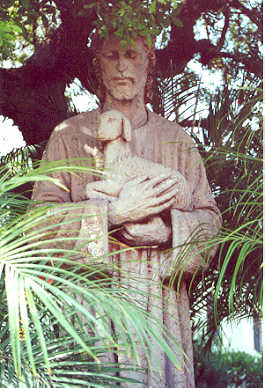 The
Son of God became Man for our salvation. Yes, He became incarnate. He took to
Himself a real human nature. Because Jesus possessed a real human nature, He
could die for us. As the Good Shepherd, He has laid down His life for us, His
sheep.
The
Son of God became Man for our salvation. Yes, He became incarnate. He took to
Himself a real human nature. Because Jesus possessed a real human nature, He
could die for us. As the Good Shepherd, He has laid down His life for us, His
sheep.
There
are indeed many thoughts which come to mind when we reflect upon the truth that
the Son of God took to Himself a human nature and dwelt among us.
-
St. John puts it
very simply in his Gospel: The Word was made flesh, he lived among us... (Jn
1:14) Yes, John states it so succinctly, yet these few words contain a
wealth of meaning. We should expect nothing else, since this brief statement
of the fourth Gospel points out the central event of all human history.
These words sum up Godís creative and redemptive activity. They sum up
Godís process of self-communication to us.
At
the Last Supper, on the night He was betrayed, our Saviour instituted the
Eucharistic Sacrifice of His Body and Blood. He did this in order to perpetuate
the sacrifice of the Cross throughout the centuries until He should come again,
and so to entrust to His beloved spouse, the Church, a memorial of His death and
resurrection: a sacrament of love, a sign of unity, a bond of charity, a paschal
banquet in which Christ is consumed, the mind is filled with grace, and a pledge
of future glory is given to us (Vatican II, Constitution on the Sacred Liturgy,
No. 17)2
-
The Church, therefore, earnestly desires that
Christís faithful, when present at this mystery of faith, should not be
there as strangers or silent spectators. On the contrary, through a proper
appreciation of the rites and prayers they should participate knowingly,
devoutly, and actively. They should be instructed by Godís word and be
refreshed at the table of the Lordís body; they should give thanks to God;
by offering the Immaculate Victim, not only through the hands of the priest,
but also with him, they should learn to offer themselves too. Through Christ
the Mediator, they should be drawn day by day into ever closer union with
God and with each other, so that finally God may be all in all.
(Constitution on the Sacred Liturgy, No. 48)3
-
Through the Eucharistic Sacrifice Christ the Lord
desired to set before us in a very special way this remarkable union whereby
we are united one with another and with our divine Head, a union that no
word of praise can ever sufficiently express. For in this sacrifice the
sacred ministers act not only as the representative of our Saviour, but as
the representative of the whole Mystical Body and of each one of the
faithful. Again, in this act of sacrifice, the faithful of Christ, united by
the common bond of devotion and prayer, offer to the eternal Father through
the hands of the priest, whose prayer alone has made it present on the
altar, the Immaculate Lamb, the most acceptable victim of praise and
propitiation for the Churchís universal need. Moreover, just as the divine
Redeemer, while dying on the Cross, offered Himself to the eternal Father as
Head of the whole human race, so now, Ďin this clean oblationí He not
only offers Himself as Head of the Church to His heavenly Father but in
Himself His mystical members as well. He embraces them all, yes, even the
weaker and more ailing members with the deepest love of His Heart. (Pope
Pius XII, Mystici Corporis AAS. XXXV, 232-233)4
-
Pope Paul VI instructs us in his encyclical, The
Mystery of Faith: "The Catholic Church has always devoutly guarded
as a most precious treasure the mystery of faith, that is, the ineffable
gift of the Eucharist which she received from Christ her Spouse as a pledge
of His immense love, and during the Second Vatican Council in a new and
solemn demonstration she professed her faith and veneration for this
mystery. When dealing with the restoration of the sacred liturgy, the
Fathers of the council, by reason of their pastoral concern for the whole
Church, considered it of the highest importance to exhort the faithful to
participate actively with sound faith and with the utmost devotion in the
celebration of this Most Holy Mystery, to offer it with the priest to God as
a sacrifice for their own salvation and for that of the whole world, and to
find in it spiritual nourishment.
For
if the sacred liturgy holds the first place in the life of the Church, the
Eucharistic Mystery stands at the heart and center of the liturgy, since it is
the font of life by which we are cleansed and strengthened to live not for
ourselves but for God, and to be united in love among ourselves...
"It
is to be desired that the faithful, every day and in great numbers, actively
participate in the Sacrifice of the Mass, receive Holy Communion with a pure
heart, and give thanks to Christ Our Lord for so great a gift...5
Ephesians 1: 11-14
And it is in him
that we have received our heritage,
marked out beforehand as we were,
under the plan of the One
who guides all things
as he decides by his own will,
chosen to be,
for the praise of his glory,
the people who
would put their hopes in Christ
before he came.
Now you too, in him,
have heard the message of the truth
and the gospel of your salvation,
and having put your trust in it
you have been stamped with the seal
of the Holy Spirit of the Promise,
who is the pledge of our inheritance,
for the freedom of the people
whom God has taken for his own,
for the praise of his glory.
Days pass and
we grow older.
Some of us
wither and die.
Some are
killed in car wrecks.
Today is the
day to turn our lives over to God.
Please help us
pass out these little cards to all souls.
|
Say daily
God, I
give you my life in union
with the Mass as an offering for
the souls, the Church and the
priests
Help us!
|
|
Your life is so important for souls,
you can help bring down great grace.
|
These are
available from Shepherds of Christ free of charge.
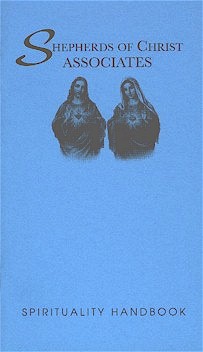 We
include the following excerpt and explanation from the Spirituality Handbook.
This was written by Fr. Carter.
We
include the following excerpt and explanation from the Spirituality Handbook.
This was written by Fr. Carter.
A Way of
Spiritual Life
The
way of spiritual life proposed to the members of Shepherds of Christ
Associates is centered in consecration to the Hearts of Jesus and Mary. All
aspects of the spiritual life discussed below should be viewed as means to help
members develop their lives in consecration to Christ, the Sacred Heart, and to
Mary, the Immaculate Heart.
An Overview of
the Spiritual Life
The
Christian life is rooted in the great event of the Incarnation. We must
consequently always focus our gaze upon Christ, realizing that everything the
Father wishes to tell us has been summed up in the life, death, and resurrection
of Jesus. It only remains for us, then, to strive to understand with greater
insight the inexhaustible truth of the Word Incarnate:
"In
many and various ways God spoke of old to our fathers by the prophets; but in
these last days He has spoken to us by a Son, Whom He appointed the heir of all
things, through Whom also He created the world."
(Heb. 1: 1-2) 1
What
was the condition of the human race at the time of Christ
ís
coming? In some ways, people were much the same as we are today. There were
those just being born into this world of human drama. There were those who, in
death, were leaving it, some of whom had grasped but little of lifeís
meaning. There were those who were healthy and vigorous. There were those who
were sick and lame. Some especially felt the burdens, the grief, the suffering
of the human condition. Others were ebullient and desired all the pleasures life
could provide. There was some good being accomplished. Immorality, however, was
rampant. What St. Paul tells us concerning the time that immediately followed
Christís
existence certainly could also be applied to the time of His entrance into the
world. It is, in short, an ugly picture that St. Paul depicts for us (Rom. 1:
22-32).
Into
such a depraved condition Jesus entered, with a full and generous Heart, to lead
the human race from the depths of sinfulness to the vibrant richness of a new
life in Himself. Through His enfleshment, this Christ became the focal point of
all history. The authentic hopes and dreams of the human family, now so
overshadowed by the ugliness of sin, came converging upon this Christ. He would
gather them up in Himself, give them a new luster and brilliance and dynamism,
and would lead the human family back to the Father in the Holy Spirit.
Christ
was radically to release us from the dominion of sin and elevate us to a new
level of existence. This life Christ has given us is not a type of
superstructure which is erected atop human existence. Although nature and grace
are distinct, they do not lie side by side as separate entities. Rather, grace
permeates nature. The Christian is one graced person. The Christian is one who
has been raised up, caught up, into a deeper form of life in Christ Jesus.
Nothing that is authentically human in the life of the Christian has been
excluded from this new existence. Whatever is really human in the life of the
Christian is meant to be an expression of the Christ-life. The simple but deep
joys of family life, the wonderment at nature
ís
beauty, the warm embrace of a mother for her child, the agony of crucial
decision making, the success or frustration that is experienced in oneís
work, the joy of being well received by others, and the heartache of being
misunderstood--all these experiences are intended to be caught up in Christ and
made more deeply human because of Him.
Jesus
has come, then, not to destroy anything that is authentically human, but to
perfect it by leading it to a graced fulfillment. This is the meaning of the
Word
ís becoming
flesh, the meaning of the Incarnation. The more God-like we become through
Christ, the more human we become.
We,
through our incorporation into Christ which occurs at Baptism, are meant to
relive the life, death, and resurrection of Jesus. In doing so, we are not only
accomplishing our own salvation, but we are assisting in the salvation of others
also. The Incarnation continues all the time. Christ, of course, is the one Who
fundamentally continues the Incarnation. But He enlists our help. The world no
longer sees Jesus, no longer is able to reach out and touch Him. We are the ones
who now, in some way, make Christ visible and tangible. In union with the
invisible, glorified Christ, and depending on Him as our source of life, we
continue the Incarnation in its visible and temporal dimensions. This is our
great privilege. This is our great responsibility.
The
Christian is initiated into the mystery of Christ, into his or her role in
prolonging the Incarnation, through Baptism. In the words of St. Paul:
"Do
you not know that all of us who have been baptized into Christ Jesus were
baptized into His death? We were buried therefore with Him by Baptism into
death, so that as Christ was raised from the dead by the glory of the Father, we
too might walk in newness of life."
(Rom. 6: 3-4).
It
is not sufficient, however, that we be incorporated into Christ through Baptism.
All forms of life require nourishment. So, too, our life in Christ must be
continually nourished. How can we continually keep in contact with Christ? There
are various ways. We contact Christ in a most special way through the liturgy,
above all in the Eucharistic liturgy. Here the entire course of salvation
history, as centered in Jesus, is sacramentally renewed and continued. Through
our most special and most personal meeting with Jesus in the Mass, we are more
deeply incorporated into Christ. Also, we should remember that all the
sacraments make up part of the Church
ís
liturgy.
The
reading of Scripture provides another special opportunity for meeting Jesus.
This is true for both Old and New Testaments. The Old Testament prefigures the
New Testament and leads to it. It is obvious, however, that we meet Christ
especially in the pages of the New Testament. How true it is to say that not to
be familiar with Scripture is not to know Jesus properly. We should resolve to
read from Scripture daily.
We
also meet Jesus in our interaction with others. Everyone we meet, everyone we
serve, is in the image of Jesus. We have to take the means to grow in this
awareness. If I truly believe that everyone has been redeemed by the blood of
Jesus, how should I treat everyone?
These,
then, are some of the ways we keep in contact with Jesus. Common to the various
ways of meeting Jesus is a certain degree of prayerful reflection. Our contact
with Jesus in the liturgy, in Scripture, and in our interaction with others, and
so forth, will not be all that it should be unless we are persons of prayer. The
light and strength of prayer enables us to keep in contact with Jesus as we
should.
We
live out our Christ-life in an atmosphere of love. Indeed, the life Jesus has
given us is centered in love. It has its origins in the mysterious love of God:
"For
God so loved the world that He gave His only Son, that whoever believes in Him
should not perish but have eternal life"
(Jn 3: 16).
Our
new life in Jesus has arisen out of God
ís
fathomless love. Christ, in His descent into human flesh, has established a
milieu of love. The life He came to give can flourish only in the framework of
love. Indeed, we can summarize the meaning of the Christian life by stating that
it is our loving response to Godís
love. The pierced Heart of Jesus, this Heart which shed its last drop of blood
in the greatest love for each one of us, is the symbol of Godís
tremendous love for us. Christís
Heart also calls us to respond by giving ourselves in love to God and neighbor.
Yes, Jesus invites us to respond to Godís
love by giving ourselves in love to Him in an ever closer union. The more
closely we are united to Him, the greater is our capacity to love God and
neighbor. The more closely we are united with Jesus, the more closely He unites
us to the Father in the Holy Spirit, with Mary our Mother at our side.
1. Scripture quotations are taken from The Revised Standard Version of the
Bible, Catholic Edition, St. Ignatius Press, San Francisco.
We
must turn ourselves over to Jesus. Jesus is our Savior. We should never doubt
Him. He is with us. The days go by with such rapidness, if we loved and served
God we will be with Him forever in heaven.
There
is an end to all of this and our reward awaits. It seems hard to think of this
as ever ending, but time is so short. Soon our life here will be over.
We
need to fight a good fight for Jesus. We need to help all we can to know Jesus.
Our days here will not go on forever, life is so short compared to all eternity.
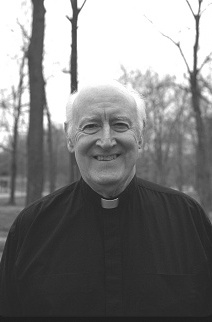 Some
day if we love and serve God we will be with Him in heaven. Our life is so short
compared to eternity. Here today, gone tomorrow. All that remains is how we
choose to live, for God or against God!
Some
day if we love and serve God we will be with Him in heaven. Our life is so short
compared to eternity. Here today, gone tomorrow. All that remains is how we
choose to live, for God or against God!
We
are responsible for all our time and our actions and how we lived in service of
God. It sounds simple but people alive on earth in sin cannot see anything else
but what they are doing now.
Satan
blinds men into thinking this life will go on and on when, in fact, it is so
short compared to eternity, just a short while. It is so easy to see. Why do we
get so caught up in this life here? It is so short. The batting of an eye, the
dropping of a pin, and our life is over and eternity awaits. Do these short
moments mean so much to us?
Time
is so short. Our time is so precious because it determines our eternal life. So
short, indeed. We must listen to the voice of our Savior. What we do, how we
act, are so small when compared to eternity! This is no laughing matter. It is
our soul that is at stake. It is our life forever and ever. Is a few years of
life, holding on to such insignificant "stuff" worth all eternity? It
is so simple. Love God, love one another. We must put Him first and everything
falls into line! It is so simple, but so hard to live by for so many.
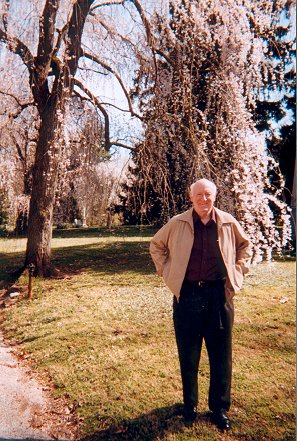 Sky
and earth will pass away, but my words will never pass away. (Luke 21:33)
Sky
and earth will pass away, but my words will never pass away. (Luke 21:33)
Here
today, gone tomorrow. We must follow the Good Shepherd. He will lead us. He is
the Light of the World. He makes the crooked ways straight and He nourishes our
souls. We do not know the glories that await him who serves the Lord. We must
hold tight to Jesus. We will receive a divine reward forever. May the name of
Jesus be exalted in heaven and on earth. The trumpet blares and the Lord ascends
His throne. All know His glory. Their lives were not in vain who served Him
while in their lives. Their rewards are as golden gems whose splendor no one can
comprehend.
Heaven
and earth may vanish like smoke, but our deeds will not be forgotten. We must
store up treasures in the life hereafter by doing good works. We must keep our
eyes on our Father in heaven. Our Father loves us so much. All will be made open
in the end and our life will be spent in the hereafter. What a reward for such a
short test!
Oh,
Jesus, praise to You from the heights. You are so good and loving. We trust in
You and Your mercy. Alleluia, Alleluia.
Sing
the song Turn to Me written by John Foley, S.J.
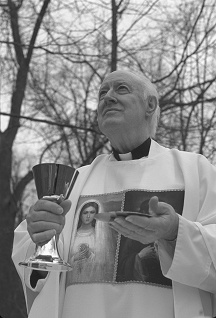
Through Him, With Him
and In Him
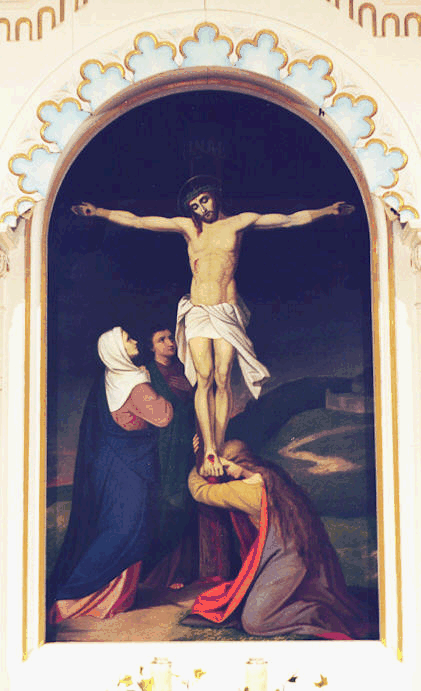 First
Friday, March 6, 1998
First
Friday, March 6, 1998
10th Day
My
beloved Spouse, the Bridegroom of my soul,
The
days go by with such swiftness, yet my focus is entirely on being one with Thee.
The days fade in and out in shades of lights and darks, some days I receive
immense insight into Your mysteries, some days I am left to tremendous
suffering, wanting You so deeply in my soul and not experiencing Your favor.
On
this First Friday, I recall vividly the vision of Your precious Heart I hold in
my heart. I see it clearly, red and filled with fire, and I know the warmth and
glow of Your sacred divine love.
Oh,
my Sacred Heart, indeed, Thy love is most sacred. Yet even though I do not
ponder as I should on the endless fires of love emitted from your treasured
Heart, I have a constant awareness of this love which leads me to march forth in
this battle of helping to win souls over for the Kingdom.
Little
is accomplished if I nurse my wounds on those dark days and sit in a corner
waiting for a great favor from You.
I
walk those shaded days as You walked with the cross on Your back, but my
awareness of Your Father and His plan for salvation is so limited, and I
struggle tremendously as I am pressed on as I travel on my journey to the end of
the day.
And
then a day of glory comes and You look upon me, my Bridegroom, and give me great
favors and allow me to have a day of resurrection from the doom and the
struggle.
And
how did He walk the earth? He walked it too, in dark and light days. Days in
which they chased Him and wanted to kill Him, in which they called Him crazy, in
which He sweat the saving Blood because of His anguish, in which He wept, in
which He loved Mary His Mother and Mary Magdalene, in which He raised His dear
friend Lazarus from the dead, in which He preached about the Kingdom to His
followers.
Days
of light, days of darkness, but He entered the tomb and came forth victorious in
the end.
He
rose to give us life, His wounds were glorified, the victory was won.
My
Bridegroom, You give to me Yourself this day. I am one in the glorified Lord in
the most intimate way. The banquet is prepared. The Lamb has been slain. Now we
reap the glory of the risen Lord. We receive the gift of life in Him.
LIGHT
and darkness. He is the Bread of Life, He comes to feed the starved soul with
Himself. Our most treasured gift, our most treasured Friend, Jesus Christ, the
Bridegroom of our soul, gives Himself as a sacrifice that we will share in His
life most abundantly.
I
love You, Jesus Christ my Bridegroom, come and possess my soul.
Following is Father Carterís
powerful writing on The Sacraments and the Mass from his book,
Response in Christ.
|
The
life of grace just described expresses itself most perfectly in the Churchís
liturgy, and at the same time it is from the liturgy that the Christian chiefly
derives strength for his life in Christ. Central to the Churchís liturgy are
the sacraments, and, most especially, the eucharistic sacrifice.
1.
The Sacraments in General
A
sacrament is a visible sign of an invisible, divine reality. Christ, therefore,
is the primordial sacrament given to men by God. In His historical existence
Christ was the visible, tangible manifestation that God has irrevocably entered
the world of man with His merciful, salvific grace. At the same time Christ
contained within Himself this divine reality which He externally manifested.6
We
have previously described the Church as the continuation of Christ.
Consequently, flowing from the idea of Christ as primordial sacrament, the
Church is also a sacrament. The Church continues the visible presence of Christ
which was attached to His historical existence. The Church, through her union
with the glorified Christ, both externally symbolizes and contains within
herself the divine reality of Godís grace which has been irrevocably
communicated to man.
The
Church as sacrament is a perduring reality. This perduring sacramentality of the
Church is actualized in a special manner through the seven sacraments. As the
Church is the general, visible continuation of Christís Incarnation, so the
individual sacraments can be considered as particular, visible extensions of
Christís Incarnation.
It
is evident, therefore, why the sacraments are special encounters with Christ.
For Christ unites Himself with the sacramental sign as He offers His grace to
the recipient of the sacraments. In this sense Christ and His sacraments become
one. The sacrament and its minister are merely instruments which Christ employs
to give Himself anew. The primary sacramental encounter is between Christ and
the Christian.
Christ
offers Himself to men through the Church and her sacraments so that men may
become ever more united to Him. This incorporation into Christ begins at
baptism, through which the Christian is made both a member of Christ and a
member of His Church. This incorporation into the life of Christ means primarily
to be incorporated into His paschal mystery, since death-resurrection was the
essential and summary mystery of Christís life. It was the central mystery
whereby He gave us life. It is the central mystery which the Christian must
relive in Christ.
Each
of the sacraments deepens our incorporation into Christís death-resurrection.
Each achieves this in a somewhat different manner according to the primary
purpose of each sacrament. Finally, and very importantly, each of the sacraments
deepens this incorporation into Christ within an ecclesial framework. The
sacraments, because they are the sacraments of Christ and His Church, intensify
the Christianís relationship not only with Christ, but also with the members
of the Church, and ultimately with all men.
The
death-resurrection of Christ, encountered in a special way through the
sacraments, is most especially renewed in the eucharistic sacrifice. Thus we can
see the logical connection between the sacraments and the Mass. All of the
sacraments point to the Mass. All of them, according to their own particular
finalities, allow for a more perfect participation in Christís paschal mystery
as sacramentally renewed in the eucharistic liturgy.
2. The Mass
How
is the paschal mystery and all the related mysteries of Christ renewed in the
Mass? As a preliminary step to answering this question, let us first give a more
detailed analysis of the mystery of Christ which was briefly described in the
chapter on the Church. Put very briefly, this mystery is Godís concrete plan
of redemption centered in Christ. The expansion of this idea leads to the
theology of mysteries, a much discussed topic since the time of Casel.
The
following is one manner in which we may conceive of the mystery of Christ. God
Himself is ultimately the mystery Ė holy, completely transcendent, completely
other. God in His inner life is thus hidden to man, unless He chooses to reveal
and communicate Himself. He has so acted, giving Himself to man in word and
action in Christ. Thus, because the ultimate mystery, God Himself, has
communicated Himself in Christ, we have the mystery of Christ, the Christian
mystery. It is legitimate to speak in the plural, designating the mysteries of
Christ rather than simply mystery, because all that Christ did was part of the
one unified mystery. In all the events of Christís life God was communicating
Himself and redeeming man in Christ.There are other ways of describing the
mystery of Christ, yet we find a common denominator in our original statement:
the mystery is Godís concrete plan of redemption in Christ.
How
is this mystery of Christ contained in the liturgy? We can explain this presence
as follows.7 Christís
mystery of redemption has a twofold aspect, one temporal and historical, the
other eternal. We first consider the historical, temporal aspect of this
mystery.
Christ
is God present among us in human form, the entry of eternity into time. Because
of Christís humanity, the acts He performed while on earth were subject to the
limits of temporal historicity. Consequently, the unique historicity of these
acts of Christ cannot be repeated, even sacramentally; no, not even by God
Himself. This would be asking the impossible of God, for to reproduce a past act
now in its temporal historicity is a contradiction in terms. Hence Caselís
theory of sacramental presence cannot be held if it posits an exact reproduction
of temporal historicity.8
Granted,
then, the temporal-not-to-be-repeated aspect of Christís earthly life and
actions, there is another aspect to be considered. Christ, although possessing
two natures, is only one person, and that divine. Consequently, the historical
redemptive acts of Christ are the acts of a divine person. Necessarily, then,
these acts partake of the eternity of the divine person and therefore are
perennial. They endure eternally in the glorified Christ.9
Through
the medium of His glorified body, this eternal aspect of Christís redemptive
acts can be made present sacramentally. In the eucharistic liturgy the very
person of the glorified Christ, containing within Himself all His redemptive
acts, is sacramentally present. In very brief form we see the manner in which
all the mysteries of Christís life are reproduced in the eucharistic liturgy.
It is within the Mass, then, the heart of the liturgy, that the Christian
encounters the person of Christ and His mysteries. This encounter takes place
chiefly through the medium of the theological virtues. In faith, hope and love
the Christian, encountering the eucharistic Christ, receives the supernatural
strength to reproduce Christ in Himself. For through contact with Christ in the
eucharist, the Christian receives the grace to relive Christís mysteries in
his own life. How true it is to say that the liturgy, centered in the Mass, is
aimed at transformation in Christ.
Granted
the primary importance of the Mass, we will now examine in greater detail the
eucharistic sacrifice. In discussing the mystery of Christ and its presence in
the eucharistic liturgy, we have already said much concerning the Mass. Yet we
believe a schematically complete outline of the Mass will provide a more
desirable framework for our purpose of demonstrating the Christianís
eucharistic participation, a participation which is at the heart of contemporary
spirituality.
Our
presentation will necessarily be only relatively schematic. At the same time we
hope it will not be superficial. We will make a fourfold division, for we
believe this is necessary for an intelligent discussion of liturgical
participation. First, we will treat of the notion of sacrifice in general. Then
we will consider Christís sacrifice within the framework of sacrifice in
general. Next we will treat of the sacrifice of the Mass. Finally, we will
consider in some detail the individualís participation in the eucharistic
sacrifice.
a) Sacrifice
in General
There
are various ways of developing the structure of sacrifice. Some authors include
more constituent elements than others. We will give a structure which we believe
includes the essential elements commonly given. This structure of sacrifice is a
traditional one, yet it is one which can well be harmonized with modern
theological, liturgical and scriptural studies. A leading scripture scholar, F.
X. Durrwell, gives us assurance on this point by telling us of the value of
considering Christís redemptive activity within the traditional structure of
sacrifice developed over the centuries: "But first it will be useful to
look once more at the drama of the Redemption, placing it in a framework Ė a
framework adequate to contain its rich reality which God Himself had prepared
throughout the history of mankind: Sacrifice."10
We enter upon our discussion of sacrifice in general by considering the first of
five constituent elements.
1) Interior Oblation
The
first duty of man is to surrender himself to God out of love. This fact flows
from the truth that God is the Creator and man is His creature. Man, if he is
ideally to fulfill his creaturely role must respond as perfectly as possible to
the loving demands of His Creator. God asks that man give himself completely to
Himself. This is only proper since everything that man has, whether of the
natural or supernatural order, has been given to him by God. Man, in turn,
perfects himself by developing these various gifts according to Godís will or,
in other words, by giving himself completely to God. Manís gift of self to God
is centered in loving conformity to the divine will. Consequently, one can
understand why the will with its decision-making capacity is the crucial faculty
in man, a point emphasized by contemporary thought.
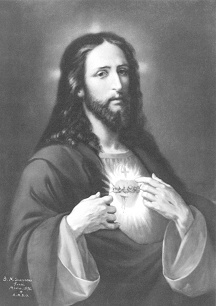 Man
directs himself to God by the virtue of religion. This is not to say that this
particular virtue ranks above the theological virtues of faith, hope and
charity. These are the most excellent, since they unite man directly to God. We
are merely stating that the virtue of religion directs all manís actions to
the honor of God.11
Man
directs himself to God by the virtue of religion. This is not to say that this
particular virtue ranks above the theological virtues of faith, hope and
charity. These are the most excellent, since they unite man directly to God. We
are merely stating that the virtue of religion directs all manís actions to
the honor of God.11
This
virtue consists especially in acts of adoration, thanksgiving, petition and
reparation. These interior acts can manifest themselves in many ways, but they
are especially expressed through sacrifice. Here, then, we have the first
constituent element of sacrifice: manís interior offering of himself to God.
This giving takes place chiefly in manís will, under the guidance of the
virtue of religion. This first element of sacrifice is of prime importance, for
it deals with interior dispositions. This importance can be recognized
concretely in the history of religion. For example, the Jewish people were
convinced that the principal value of sacrifice was centered in the dispositions
of the people.12
2) Exterior Offering
Man
is not a pure spirit. He is a rational animal, composed of body and soul.
Consequently, he desires to manifest exteriorly and concretely the interior
offering of himself which has been made to God in the first movement of
sacrifice. He does this by the exterior offering to God of some material gift.
Such a gift symbolizes the interior offering of man himself. St. Augustine says:
"A visible sacrifice, therefore, is a sacrament or sacred sign of an
invisible sacrifice."13
Justification
of this exterior oblation is also found in the fact that man is not only in part
a corporeal being, but also a social being. It is fitting therefore that man
exteriorize his interior gift of self in order that he may give worship to God
in a social manner. For his exteriorization enables many to partake in the
sacrificial ritual.
This
exteriorization of his inner offering also helps man to deepen his interior
acts. Precisely because man is a composite being, his various exterior acts of
worship can profoundly influence, among others, his interior acts of love,
adoration, thanksgiving, reparation and petition.
Here,
then, we have the second constituent element of sacrifice: the external, ritual
giving to God of some material gift which symbolizes manís interior offering
of himself.
3) Immolation of the Victim
In
the history of religion there is contained a third element of sacrifice, that of
immolation. In order to make the external offering worthy of God, man has been
accustomed to accompany his offering with a ritual that removes the external
gift from profane use. The victim is immolated so that its former existence
might cease, and that it can thus become something sacred to God. This
immolation should not be looked upon as a destruction, but as a fitting
preparation of the external gift. Such a preparation is the negative element in
the transferral process of the gift from profane use to divine ownership.14
But because the external gift symbolizes the gift of man himself, the
consecration to God of this external gift through immolation represents the
consecration of man himself to God. In other words, the immolation has a special
significance by indicating manís union with God.
Within
this consideration of immolation it will be profitable for us to refer to three
basic types of sacrifice common to the Jews of the Old Law. Such a consideration
will have its special significance in our treatment of Christís sacrifice. The
three sacrifices in question are those of the paschal lamb, of the covenant, and
of expiation or atonement. In our initial chapter we discussed the first two
types. It is sufficient to recall here that each of these, through sacrificial
blood, was instrumental in uniting the Jews with Yahweh as His people. The blood
of the paschal lamb contributed to the Jewish exodus from Egypt, an exodus which
attained upon Mount Sinai a central point of its progress toward the promised
land. Here upon Mount Sinai the sacrifice of the covenant took place as the
blood sealed the new life relationship between Yahweh and the Jews.
In
the sacrifice of expiation or atonement we again see the key role of sacrificial
blood. In this sacrifice the blood was sprinkled seven times over the
propitiatory. The purpose of this was to purify the sanctuary from all the sins
of Israel. In turn the altar was sprinkled seven times with blood in order to
achieve its purification and sanctification.
The
purpose of the sacrifice of expiation or atonement, then, was purification and
divine reunion. The land of Israel together with the tabernacle, the altar, the
sanctuary and the throne of Israel, had been stained by the sins of the Chosen
People. Through these sins God had been driven from their midst. In the
sacrifice of expiation God returns to Israel through the purification of the
tabernacle. The tabernacle symbolized the souls of the Jews, so we note that God
returns to a purified people. Here we see a simultaneity of purification and
reunion.15
Taking
together these three main sacrifices of the pasch, covenant, and expiation, we
see the role of the shedding of blood in the history of the Israelites. The
shedding of blood purified and united to God, and indeed played a most positive
role.
4) Acceptance of the Sacrifice by God
In
order that the sacrifice might reach its extrinsic consummation God on His part
must accept it. Godís acceptance of sacrifice has been shown in various ways.
Among the Hebrews assurance of the divine acceptance was seen in the phenomenon
of fire falling from heaven and consuming the victim of sacrifice. In the
absence of such a heavenly token, there was at least some assurance that God
accepted the sacrifice because of the duly consecrated altar itself. The altar
received the gifts of sacrifice, and in doing so symbolized Godís acceptance
of the same.
5) Partaking of the Sacrificial Victim
In
the history of sacrifice men have habitually shown a desire to accept Godís
invitation to partake of the offered victim. God must invite men to
participation in the sacrificial meal, for the victim of sacrifice becomes
divine property, and the use of it contrary to the divine will is sacrilegious.
If God is pleased to admit His friends to the divine banquet, this is a
manifestation of the divine goodness.
Since
the victim has in a certain way become divine through its being offered to God,
the partaking of this victim has a deep significance. Through such a
participation in the divine banquet one shares in the sanctity of the victim.16
This sharing in the holiness of the victim is actually a participation in
Godís sanctity, since the victim is holy with the holiness of God to whom it
has been offered.
Thus
the cycle of sacrifice has been completed. The interior giving on the part of
those offering the sacrifice, exteriorized and symbolized by the ritual offering
of an immolated victim, has brought down from on high a divine communication.
We
have briefly seen the general economy of sacrifice, the authenticity of which
has been borne out by history. This structure of sacrifice is authentic because
it is partly rooted in the very nature of man. At the same time, this structure
has been modified by the demands of positive law. With this general structure of
sacrifice serving as a background, we are now in a position to consider the
sacrifice of Our Lord Jesus Christ, and finally, that of the Mass.
b) Christís
Sacrifice
We
will consider Christís sacrifice according to the same constituent elements of
sacrifice already discussed. In this treatment we will follow the theory of the
unicists, who hold that Our Lord offered only one complete sacrifice as opposed
to the dualist theory which says Christ offered two complete sacrifices, one at
the Last Supper, and one on Calvary. The Church allows either position. We
prefer to follow the position of the unicists, since this seems to give a
greater unity to Christís sacrifice, and indeed to the total mystery of
Christ. This profound unity of Christís mystery has become more and more
apparent with the scriptural, liturgical and theological renewals.17
1) The Interior offering of Our Lord
The
sacrifice which Christ offered for the redemption of the world was first and
foremost an interior moral act. Christís life possessed its great value
because of His interior dispositions. His entire life was a constant gift of
Himself in love to the Father and to mankind, and Calvary was the supreme
expression of this gift. This gift of self was regulated by a perfect conformity
to His Fatherís will.
Christ
not only was constantly living out this interior disposition of sacrifice, but
He strove to inculcate the necessity of it in the Jews of His time. He
constantly opposed a false and legalistic concentration on the mere externals of
Jewish purifications, for such an attitude tended to diminish the necessary
internal dispositions. The synoptic theology of sacrifice stresses this attitude
of Christ. Bernard Cooke states: "This insistence of Jesus on internal
dispositions characterizes the Synoptic theology of sacrifice, which continues
and completes the prophetic emphasis on the moral and individual aspect of
sacrifice...One must be careful, however, not to exaggerate the opposition
(either in the prophets or in the Synoptic Gospels) between cult and internal
dispositions of soul."18
2) Ritual Oblation
As
we have said, man, because of his corporeal and social nature, has always
desired to express the interior oblation of sacrifice in an external, ritual
oblation. So it was with Christ. Unlike the dualists, who maintain that
Christís interior offering was sufficiently exteriorized during the passion
itself, the unicists maintain that the only place where we can locate a ritual
oblation is at the Last Supper. This ritual oblation cannot be found in any
other phase of Christís sacrifice Ė from the Garden to the Cross Ė despite
the efforts of some to do so. Notice, too, that in the case of Christís
sacrifice, the ritual oblation of the Last Supper is of a victim-to-be-immolated
rather than of a victim already immolated... Christís ritual oblation at the
Last Supper possessed a many-faceted signification. We will comment on several
aspects. We begin by recalling the social implications of the ritual oblation.
This social element is present in Christís actions at the Supper. He told the
Apostles to do what He was doing in commemoration of Him. This would assure that
in the future the head and members of the Church would sacramentally renew
Christís redemptive, sacrificial act. In this manner the members of Christís
Body would not passively receive the graces of Christís sacrifice, but rather
would assimilate these graces by actively entering into Christís act of
atonement. Consequently, Christís sacrifice, in its perennial, sacramental
renewal down through the ages, was to be of a social, corporate nature.
Closely
related to this social aspect of Christís actions were the covenant
significations of the Last Supper ritual. This is brought out by observing the
connection of Christís actions with two of the chief types of Jewish
sacrifices we have previously mentioned, the sacrifice of the pasch and that of
covenant. In both of these the concept of sacrificial blood enters in.
The
Last Supper was a paschal meal, or at least had a paschal significance. The
Jewish paschal meal commemorated the Jewish peopleís delivery from Egyptian
slavery, which, in turn, symbolized their deliverance from sin. The enslaved
Jews had been freed from Egyptian tyranny with the aid of the blood of the
paschal lamb. For this blood, we recall, had exempted Jewish homes from the
visit of the exterminating angel. How fitting, then, that at the paschal supper
Christ instituted the eucharist in which His blood is sacramentally shed. He is
the new paschal lamb whose blood frees us not from Egyptian slavery but from
slavery to sin. The old pasch, a covenant communion between Yahweh and His
chosen people whom He delivered from Egypt, gives way to the new pasch, the new
covenant communion between God and His people.
These
ideas concerning covenant lead us to a consideration of the second type of
Jewish sacrifice linked with Christís actions at the Last Supper. We recall
that in the sacrifice of the covenant Moses sprinkled sacrificial blood on both
the altar representing Yahweh and the people. This blood, considered to be
source of life, united Yahweh and His people in a union, a common life, or, in
other words, a covenant. We understand, consequently, the deep significance of
Christís words at the Last Supper when He referred to His blood as being that
of the new covenant. This is the blood which establishes between God and men a
new union, a new covenant.
3) Immolation of the Victim
The central importance of Christís
sacrificial blood is evident. It is the blood of the new paschal lamb. It is the
blood of the new covenant, the blood which redeems man. The shedding of this
blood occurred during the immolation of Christís passion-death. Schillebeeckx
points out the significance of this immolation in blood: "The Blood of
Christ is a theme that is truly central in the primitive Church, as Scripture
shows it to us. This death sanctifies mankind, reconciles, establishes peace,
redeems, constitutes the Church, and therefore unites man in communion with God
and his fellow men. We are redeemed in sanguine, through the blood of Christ Ė
this we find on almost every page of Scripture. It is impossible therefore to
spiritualize Christís sacrifice, to make it merely an internal act of love.
There was indeed the act of love, but it was embodied in the sacrifice of
blood."19 At this
point we also note the profound unity of Christís sacrifice. We observe that
priest and victim are one and the same. At the Last Supper, Christ is chiefly
priest; on Calvary, He is chiefly victim. Yet He is always priest and victim.
Christ does not perform the immolation. He rather endures it. However, this is
sufficient since it is not necessary for the priest of the sacrifice to achieve
the immolation himself.
4) The Fatherís Acceptance of
Christís Sacrifice
We
have demonstrated that one of the constituent elements of sacrifice is its
acceptance by God. In the case of Christís sacrifice, this acceptance by the
Father was accomplished in a most glorious fashionĖthrough Christís
Resurrection and Ascension. The Father glorified His Son for the perfect,
whole-hearted sacrifice of Calvary. This glorification shall endure for all
eternity, since Christ reigns at the right hand of the Father as eternal victim,
as eternal, glorified victim. Through this glorified Christ the treasures of His
sacrifice are distributed to all men: "Christís glorification is the
mystery whereby the treasures of his divinity flow to us, through the opening of
his mortal life."20
In
the union of these last two elements of Christís sacrifice, His immolation in
death and the acceptance of His sacrifice through the Resurrection and
Ascension, lies the essence of Christís redemptive act Ė of course, in
saying this we presuppose the first element of Christís sacrifice, His
interior disposition or oblation; this is the essential element. This union of
Christís death and Resurrection is called His paschal mystery, His passover.
In what did this passover or transition consist? In our initial chapter we
briefly described this passover of Christ. We will now expand to some extent
upon this basic reality of Christís life.
The
divine love, or agape, descended into this world for the salvation of men. This
saving force manifested itself to men through the redemptive activity of the
Word made flesh. By becoming man, Christ, although free from sin, submitted
Himself to the conditions and circumstances of a sinful world. His redemptive
activity consisted in a struggle with the forces of evil. As this struggle
developed, Christ at the same time was returning to the glory of His Father. He
finally conquered completely through His paschal mystery. Through His death He
liberated Himself completely from a world impregnated with sin and passed over
into the new order of the Resurrection. Moreover, Christ experienced this
transition process not just for Himself. By His own passover Christ achieved for
all men the opportunity to pass from death to life, from a life of sin to a new
life as sons of God. In the words of Lyonnet, "The redemption is
essentially the return of humanity to God. The return is accomplished first of
all in Christ who died and rose again as the first fruits of this humanity
(objective redemption), and then in each Christian who dies and rises again with
Christ in baptism (subjective redemption)."21
Consequently,
we have observed, in terms of sacrificial elements, the most intimate union
which exists between Christís death and Resurrection. They are inseparable,
and lie at the heart of the total mystery of Christ. This paschal mystery is
central, therefore, to the liturgy and to the whole Christian life.
5) The Banquet in Christís Sacrifice
The
cycle of sacrifice is strikingly completed by God graciously extending an
invitation to partake of the offered victim. This element of sacrifice is
miraculously fulfilled in Christís oblation. By the words of consecration the
bread and wine become Christ. In this manner Christ gives Himself to His
disciples at the Last Supper. We will further develop these ideas of eucharistic
communion in our consideration of the Mass.
We
hereby complete the consideration of the elements of Christís sacrifice.
According to the unicists there was but one sacrifice of Christ. The Last
Supper, death and Resurrection each contributed essential elements. This one
sacrifice of Christ endures in its efficacy for all time. In itself it is not to
be repeated. Its sacramental renewal, however, is repeated daily on our altars
in the Mass.
c) The
Sacrifice of the Mass
Some
contemporary authors, while not necessarily de-emphasizing the sacrificial
nature of the Mass, are giving a renewed emphasis to the concept of the Mass as
banquet or meal. This is all to the good, as long as the sacrificial structure
is not allowed to recede to the background. In this regard it is well for us to
recall the mind of the early Church. Jungmann says: "The first centuries of
Christianity, which had built the framework for the celebration of the Eucharist
which is still followed today, had laid down two basic thoughts: The Mass is the
memorial of the Lord, and it is the sacrifice of the Church. These two thoughts
are expressed just as clearly and simply today: Ď...calling to mind the
blessed passion Ė we offer to your sovereign majesty Ė this pure
sacrifice.í "22 We
should always unite the concepts of the Mass as sacrifice and the Mass as meal
by realizing that the eucharistic meal is an integral part of the sacrifice. It
is its conclusion.
We
should also be aware that the Mass is a covenant sacrifice. It is the
sacramental renewal of Christís covenant sacrifice. The Mass is the central
act of our covenant life in Christ, and therefore it embraces the four great
dimensions of covenant love. In Christ, by the action of the Holy Spirit, we
open ourselves in a special manner during the eucharistic liturgy to the
Fatherís love and we respond to that love. In Christ and His Spirit we also
pledge ourselves at Mass to go out in a deeper love to the members of the People
of God and to all men. We also commit ourselves anew to be open in receiving the
love of others. According to these various perspectives, the Mass above all is
an action of love.
1) Interior Oblation of the Mass
The
chief priest and victim of the Mass is the same as the priest and victim of the
Last Supper and Calvary, Christ Himself. Christ makes this interior offering of
Himself in the Mass for the same ends as were present in His own unique
sacrifice Ė adoration, thanksgiving, petition and satisfaction. However,
Christ is not the only priest at the Mass as He was at the Last Supper and upon
Calvary. All the members of the Mystical Body are priests along with Christ. To
be sure, there is a difference between the hierarchical priesthood of bishops
and priests and the universal priesthood of the faithful. This difference is one
of essence and not merely degree. The point we wish to stress, however, is that
the universal priesthood is a real participation in Christís priesthood given
through the sacraments of baptism and confirmation.
This
concept of the priesthood of all the Churchís members is being stressed today
in a special manner.23 Jungmann,
the outstanding liturgical theologian, gives us reasons why this concept of
universal priesthood became relatively obscure for so many years. He states that
the concept of the Mass as the Churchís sacrifice faded into the background as
a result of the Reformation. The Reformers maintained that there was only one
sacrifice, the one which Christ offered upon Calvary. To counteract this heresy
the Council of Trent and the theology consequent to it had to clarify that the
Mass is a true sacrifice, but not an absolutely independent one. It is a
sacrifice relative to the absolute one of Calvary and a representation of it. It
was emphasized that the priest of Calvary is also the chief priest of the Mass.
Because of such doctrinal controversies, the concept that Christ offers the Mass
was alone considered important. The concept that the Mass is also the sacrifice
of the Church practically disappeared. Finally, Jungmann notes that today we are
returning to the balanced view which meaningfully recognizes that the Mass is
not only the sacrifice of Christ, but also that of the Church.24
This stress on the Churchís part in the Mass is logically connected with the
contemporary emphasis on the priesthood of all the members of the People of God.
As
Christ is not the only priest of the Mass, neither is He the only victim. Again,
all the members of the Church are victims along with Christ. Various Church
documents attest to this. For instance, Pope Paul VI officially calls attention
to this: "It is a pleasure to add another point particularly conducive to
shed light on the mystery of the Church, that it is the whole Church which, in
union with Christ functioning as Priest and Victim, offers the Sacrifice of the
Mass and is offered in it."25 Therefore,
the members of the People of God, united as priests to Christ the high priest,
offer a combined victim to the Father: Christ and themselves. Such then in all
its deep meaning and beauty is the first sacrificial element of the Mass.
2) Ritual Oblation of the Mass
Just
as Christís interior offering of Himself was externalized in a ritual oblation
at the Last Supper, so is there an external, liturgical rite of the Mass. The
importance of this many-faceted exteriorization is brought out by Vatican IIís
Constitution on the Liturgy.
As
mentioned before, this exteriorization of the internal oblation is according to
manís social and corporeal nature. That it is in harmony with the social part
of man is evident from the fact that the external rite assembles the People of
God to worship together as a community. The individual members are consequently
enabled to help one another to achieve the proper worship of God. The Constitution
gives stress to this social aspect of the liturgy. It states that the very
nature of the liturgy demands that all the faithful be led to a full and active
liturgical participation. Such is in keeping with their vocation as "a
chosen race, a royal priesthood, a consecrated nation" (1 P 2:9). The Constitution
emphatically states that such full and active participation on the part of all
the people is the chief aim of the liturgical renewal.26
As
also previously observed, the external rite is likewise according to manís
bodily nature. In the case of the Mass (and the sacraments also) we observe that
the very validity of the sacrifice depends on having the proper materials for
the offering Ė bread and wine Ė and on the use of the proper form of
consecration. The external, the ritual, the sensible, are indeed indispensable.
In all this we note the great law of incarnation. The Incarnation established a
set pattern for the redemption of the world, redemption taken both objectively
and subjectively. Christ redeemed the world through His sacred humanity. This
humanity is, then, the gateway to the divinity, to eternal life.
As
Christís created humanity was indispensable for accomplishing the sacrifice of
the objective redemption, so are created things necessary for the eucharistic
sacrifice of the subjective redemption. This fact calls to mind the thought of
Teilhard de Chardin. Teilhard holds a world concept in which all things, natural
and supernatural, spiritual and material, are united in a single and organic
unity. The pole of this unity is the person of the Incarnate Word, towards whom
the whole of creation converges.27
In such a concept the law of incarnation is developed to the utmost, a fact
brought out by the following words of Teilhard: "Let us remember that the
supernatural nourishes itself on everything."28
At
various times in the history of Christian spirituality, the Church has been
plagued with an exaggerated spiritualism rising out of various sources. Such a
spiritualism, looking upon material things as more of a hindrance than a help,
is foreign to the true Christian spirit. A true theology of the Incarnation, a
theology which the Church so well concretizes in her liturgy, can lead to no
other conclusion.
It
is no accident that a meaningful incarnation spirituality is developing
concomitant with the liturgical renewal. Although we would not want to say that
the incarnational element outweighs the transcendent element in the Churchís
portrayal of the Christian life, yet she is leading the faithful of all
vocations to a deeper incarnationalism. The Church is accomplishing this through
a variety of ways. She is achieving this incarnationalism, for instance, through
the great social encyclicals, through the documents of Vatican II, and, in
reference to our present topic, through a revived liturgy.
There
is a deep significance, and a rich world of thought connected with the second
sacrificial element of the Mass: the ritual oblation which incarnates the
interior oblation.
3) Immolation of the Victim
Christ,
the chief victim of the Mass, has been immolated once and for all in the
offering of His own unique sacrifice. And yet, since the Mass is a true
sacrifice in its own right, we logically look for an unbloody immolation of
Christ the victim. Where do we find this immolation? Traditionally it has been
seen to be present in the double consecration of bread and wine. This double
consecration symbolizes the separation of Christís blood from His body, and,
consequently, symbolizes His death. Pius XIIís encyclical, Mediator Dei,
states: "Thus the commemorative representation of His death, which actually
took place on Calvary, is repeated in every Sacrifice of the altar, seeing that
Jesus Christ is symbolically shown by separate symbols to be in a state of
victimhood."29
Jungmann reminds us of the importance of this sacramental immolation of Christ.
While admitting and even stressing the importance of giving the "meal
symbolism" its proper place in the Mass, Jungmann calls for a priority of
sacrificial symbolism: "It is quite another question whether or not it is
necessary or even correct to regard the meal symbolism as the decisive and
fundamental thing in the outward transaction of the Mass. If the Mass is a
sacrifice then this must find appropriate expression in the outward picture too;
for sacrifice is essentially a demonstrative action, the symbolic representation
of inward readiness to give oneself."30
Durrwell,
a biblical theologian, also highlights the importance of the Massís
immolation. He seems to say that Christís immolation is symbolized by the very
words of consecration. He says that the Last Supper and its commemoration, the
Mass, are sacrificial meals. Consequently, "...Christ appears in the victim
state. He gives them to drink "the blood of the new covenant, shed for
manyí (Matt, Mark), blood of sacrifice as the establishment of the old
covenant required (Exod xxiv, 8) shed at the moment of drinking."31
However,
as we have said, Christ is not the only victim of the eucharistic sacrifice. The
members of His Body, the Church, are also victims along with Christ. Those
members must also be in a state of victimhood. As with Christ, they cannot
undergo a bloody immolation. Their immolation must also be a mystical one. How
is this accomplished? We can look to two passages of the encyclical Mediator
Dei for thoughts on such a mystical immolation. In one passage we read that
pride, anger, impurity and all evil desires are to be mystically slain. As the
Christian stands before the altar, he should bring with him a transformed heart,
purified as much as possible from all trace of sin.32
Positively considered, such a transformation means that the Christian is
striving to grow in the supernatural life by all possible means, so as to
present himself always as an acceptable victim to the heavenly Father.
In
another passage of the same encyclical this mystical immolation of Christís
members is further developed. To be a victim with Christ means that the
Christian must follow the gospel teaching concerning self-denial, that he detest
his sins and make satisfaction for them. In brief, the Christianís victimhood
means that he experiences a mystical crucifixion so as to make applicable to his
own life the words of St. Paul, "I have been crucified with Christ... (Ga
2:19)33
Jungmann
has a beautiful passage concerning the Christianís eucharistic immolation. He
states: "Every sacrament serves to develop in us the image of Christ
according to a specified pattern which the sacramental sign indicates. Here the
pattern is plainly shown in the double formation of the Eucharist; we are to
take part in His dying, and through His dying are to merit a share in His life.
What we here find anchored fast in the deepest center of the Mass-sacrifice is
nothing else than the ideal of moral conduct to which the teaching of Christ in
the Gospel soars; the challenge to an imitation of Him that does not shrink at
sight of the Cross; a following after Him that is ready to lose its life in
order to win it; the challenge to follow Him even, if need be, in His agony of
suffering and His path of death, which are here in this mystery so manifestly
set before us."34
Summarily,
then, we become victims with Christ by lovingly conforming our wills to the
Fatherís will in all things. Such conformity was the essence of Christís
sacrifice, of His victimhood, and of His immolation. A similar conformity must
be in the victimhood and the immolation of Christís members. This mystical
immolation is a lifelong process. The ideal is that each Mass participated in by
the Christian should mark a growth in his victimhood. The true Christian desires
to die more and more to all which is not according to Godís will so that he
may become an ever more perfect victim with Christ.
4) The Fatherís Acceptance of the
Eucharistic Sacrifice
It
has been observed that if sacrifice is to have its desired effect, it must be
accepted by God. That the Father always accepts the eucharistic sacrifice is
certain. For the principal priest and victim is Christ Himself, always supremely
acceptable to the Father. As for the subordinate priests and victims, they are,
taken together, the People of God, the Church herself.
There
is always an acceptance on the Fatherís part even as regards this subordinate
priesthood and victimhood of the Mass. For even though the Mass may be offered
through the sacrilegious hands of an unworthy priest, there is always a basic
holiness in the Church pleasing to God. Because of such holiness the Father
always accepts the Churchís sacrificial offering, for the Mass is the
sacrifice of the whole Church, and cannot be fundamentally vitiated by the
unworthiness of any particular member or members, even if that member be the
officiating priest.
What
do we say concerning the Fatherís acceptance of the sacrificial offering of
the individual Christian? Such an offering will be acceptable in proportion to
the Christianís loving conformity of will to the Fatherís will. Speaking of
the Christianís participation in the Mass, Jungmann says: "It follows
that an interior immolation is required of the participants, at least to the
extent of readiness to obey the law of God in its seriously obligatory
commandments, unless this participation is to be nothing more than an outward
appearance."35
Having
considered in successive sections the immolation and acceptance elements of the
Mass, we should consider the vital link between these two. For just as the two
are inseparably connected in Christís sacrifice, so are they also united in
the Churchís sacrifice of the Mass.
In
Christ we equated the immolation of His sacrifice with His passion-death, and
the acceptance element with His Resurrection. Uniting these two mysteries of
death-resurrection, we spoke of Christís paschal mystery. We have seen that
this mystery had been prefigured by the Jewish pasch and exodus, component parts
of the Jewish peopleís transition to a new and more perfect life. In the case
of Christ, we considered His paschĖHis passoverĖto be a transition from the
limitations of His mortal life to the state of resurrected glory. We speak of
Christís mortal humanity as having exercised limitations upon Him in this
sense, that, although He Himself was completely free from sin, He had exposed
Himself to the conditions of a sin-laden world through His human nature. In His
death-resurrection He changed all this as He conquered sin, as He redeemed us,
as He passed to the state of glory with His Father.
What
happened in Christ also occurs in His Mystical Body, the Church. The Church and
Her members experience their own transition from death to resurrection. The
entire Church and the individual Christian express, through the Mass, a
willingness to grow in the participation in Christís death. The Father accepts
this willingness and gives an increase in the grace-life, a greater share in
Christís Resurrection. This process happened within a short span of time in
Christís life. In the life of the Church it continually takes place until
Christís second coming. The Church, with her grace-life of holiness, has
already partially achieved her resurrection, but not completely, even though she
continues to grow in grace. St. Paul bears witness to this: "...but all of
us who possess the first-fruits of the Spirit, we too groan inwardly as we wait
for our bodies to be set free." (Rm 8:23).
Vatican
IIís Constitution on the Church beautifully portrays this fused state
of death-resurrection which the Church in her members experiences here below as
she awaits the fullness of the resurrection in the world to come: "For this
reason we, who have been made to conform with him, who have died with him and
risen with him, are taken up into the mysteries of his life, until we will reign
together with him... While still pilgrims on earth, tracing in trial and in
oppression the paths he trod, we are anointed with his sufferings as the body is
with the head, suffering with him, that with him we may be glorified..."36
5) Partaking of the Eucharistic Meal
The
cycle of the eucharistic sacrifice is completed as the priest and faithful
partake of Christ the paschal lamb. The People of God have given Christ to the
Father. Now the Father gives Christ to the Churchís members in the eucharistic
meal. Although the priest alone must communicate to assure the integrity of the
sacrifice, it is highly desirable, of course, that all present partake of the
eucharist.
In
the sacrifices of old, the victim of the sacrificial banquet was considered in
some sense divine by the fact that it had been offered to the divinity. In the
sacrifice of the new covenant we receive divinity itself through the sacred
humanity. With such a marvelous conclusion to the eucharistic sacrifice, the
fruits of Christís sacrifice of Calvary are continually experienced.
There
are other truths to be considered under the paschal meal aspect of the Mass. One
of these is the concept of the eucharist as sign and cause of unity. Von
Hildebrand comments on this: "All receive the one body of the Lord, all are
assimilated into the one Lord. Even if we leave aside the supreme ontological
supernatural unity which is realized here, the very act of undergoing this
experience represents an incomparable communion-forming power."37
Through
the sharing of the one paschal lamb, the Christian assembly has thus been
vividly reminded of their oneness in Christ. Yet this is a oneness in plurality.
For each Christian is a member of the one Body of Christ in his own unique way.
He has been called upon to assimilate Christ according to his own personality,
vocation and graces. Consequently, just as the members of the People of God are
reminded of their unity at Mass, so are they made aware of their own uniqueness
as they depart from the eucharistic assembly, each carrying Christ to his own
particular environment according to his own individual personality.
We
have considered the Churchís eucharistic sharing in the mystery of Christ
according to a sacrificial structure. With the general structure of the Mass
established, we will now enlarge upon the concept of the participation of the
individual.
d) The
Christianís Participation in the Mass
God
has created man a social being. This fact has relevance as regards manís
salvation and perfection. Man does not go to God alone, but rather is saved and
perfected with and through others. This is evident in the study of salvation
history as one observes God communicating Himself to man in the framework of
community. As we have seen, this social dimension is also readily evident in the
liturgy.
As
we now discuss the individualís participation in the liturgy, we in no way
intend to underestimate the communal aspect of the eucharistic sacrifice. We
constantly presuppose it and its importance. Liturgy as communal is the
indispensable framework and background for any discussion of the individualís
liturgical participation.
Granted
all this, it is still useful and necessary to speak of the individualís
participation in the Mass.38 Ultimately
it is the individual as individual who accepts or rejects Godís offer of
salvation and sanctification. Therefore, to speak of the individualís response
to God in the liturgy is highly significant. Despite all the communal helps the
individual receives in the liturgy, despite the fact that the individual must
always be deeply aware that he is a member of the community, the People of God,
it is still true to say that it is within the depths of his own mysterious,
individual personality that the Christian either becomes a mature Christian
through the liturgy or fails to do so. With such preliminary ideas established,
let us now consider the Christian and his role in the Mass.
1) The Baptized Christian and the Mass
Once
again the reader is reminded that through baptism the Christian becomes
incorporated into Christ and His Church. Confirmation perfects this
incorporation. Although baptism incorporates us primarily into Christís death
and Resurrection, we again stress that it also unites us with Christ in all His
mysteries. This is so because all Christís mysteries are essentially one
mystery, for none of them stands separately by itself. Consequently, one cannot
be initiated into Christís paschal mystery without simultaneously being
incorporated into all of His mysteries.
The
fact that all of Christís various mysteries are contained in the total mystery
of Christ enables the Christian to encounter the entire Christ in the liturgy.
Mention of this fact brings us to our next point.
In
baptism the Christian first encounters and relives the mystery of Christ. He
thereby receives a new life. But this life must be nourished. The Christian must
constantly re-encounter the mystery of Christ, and this he does chiefly through
the eucharistic liturgy. Here the Christian is daily privileged to encounter
Christ in the most intimate fashion. Here above all he exercises his priesthood
and consequently grows in supernatural vitality. We use the word exercise
purposely, since the liturgy is primarily an action, an exercise of the
priestly office of Christ.
Since
the baptized Christian is sacramentally participating in the mystery of Christ
at the Mass, his priestly act must be modeled after that of Christís. This is
true because the life of grace flowing out of the seals of baptism and
confirmation is structured according to certain modalities or characteristics
based on the life of Christ. This truth was developed at some length in the
previous chapter. There we stated that Christ, the head of the Mystical Body,
has determined, through His own life of sanctifying grace, the general lines of
development according to which His membersí lives of grace grow and mature.
Therefore
it is evident that the whole of the Christianís life must be orientated to the
Mass and be centered about it; for in Christ we see His entire life centered
around His priestly act of Calvary. This is true because His interior
sacrificial disposition, the essence of His priestly act, permeated everything
in His life.
The
baptized Christian should also bring his daily life, his whole life, to the
eucharistic sacrifice. The Church which assembles about the altar is not a
nebulous, ethereal entity, but the Church of this earth. It is the Church of men
and women who are immersed in the work of this world. As they gather for the
eucharistic sacrifice, they are therefore not removed from the world of their
ordinary daily lives to an unreal world of ritual which has no connection with
their temporal cares and activities. Rather it is the reality of this ordinary
daily life which they bring to offer as priests and victims in union with
Christ, priest and victim. In such a manner, then, the eucharistic sacrifice
looks to the past life of the Christian.39
Yet
the Mass also looks to the future of the Christian. By his participation in the
Mass he receives grace to assimilate in a more perfect manner the mystery of
Christ. Ideally, each Mass participated in by the Christian should mean that he
leaves the eucharistic assembly with a greater Christ-likeness. Thus he takes up
his daily life as a more fervent Christ-bearer.
The
Mass as it looks to both the past and future embraces the Christianís entire
life. It is meant to be lived each minute of the Christianís life. Durrwell
says: "The Mass is said in order that the whole Church and the whole of our
life may become a Mass, may become Christís sacrifice always present on earth.
St. Francis of Sales resolved that he would spend the whole day preparing to say
Mass, so that whenever anyone asked what he was doing, he might always answer,
ĎI am preparing for Massí. We also could resolve to make our whole lives a
participation in the divine mystery of the Redemption, so that when anyone puts
the question to us, we can always answer, ĎI am saying Massí."40
2) The Mass lived out
As
the Christian lives out the Mass, he is consequently daily laboring with Christ
in furthering the work of the subjective redemption. This is so because
Christís sacrifice was a redemptive act, and the Churchís reliving of this
act in the Mass is also redemptive. In this regard we must remember that the
entire universe Ė not merely manĖhas been redeemed. The nonrational and
rational world alike await the furthering of the redemption. St. Paul tells us:
"From the beginning till now the entire creation, as we know, has been
groaning in one great act of giving birth; and not only creation, but all of us
who possess the first-fruits of the Spirit, we too groan inwardly as we wait for
our bodies to be set free." (Rm 8:22-23). How does the Christian help
Christ redeem the world? (Henceforth the term "world" is to be
understood as including both rational and nonrational creation.) As previously
stated, the Christian helps Christ redeem the world by reliving Christís
mysteries. The same "events" or mysteries which accomplished the
objective redemption further the subjective redemption also. Since at the heart
of Christís mysteries are His death and Resurrection, it is especially these
that the Christian must relive. As the Christian dies mystically with Christ
through loving conformity with the Fatherís will, he rises with Christ to an
ever greater share in the Resurrection, in the newness of life, in the life of
grace. As the Christian in this manner relives the paschal mystery of Christ, he
is accomplishing not only his own redemption, but he is also, in a mysterious
yet real manner, helping Christ redeem the world.
Although
Christís life was summed up in death-resurrection, it also included various
other "events" or mysteries. Each of these in its own manner
contributed to the redemption. So it is with the Christianís life. His
participation in Christís death-resurrection must be "broken down"
into the other mysteries of Christís life.
The
Christian must always remember that he carries away from the Mass not only the
Christ of the death and the Resurrection, but also, for example, the Christ of
the hidden life and the Christ of the public life. As the Christian lives out
his Mass in the exercise of his Christ-life, all these various mysteries should
therefore be present.
Before
we give examples of how the Christian can relive these saving events of
Christís life, it is well that we first distinguish the two different levels
on which the Christian assimilates the mystery of Christ.
Christ,
through His death and Resurrection, has transformed us. This transformation is a
"new creation," a new life of grace. Through our baptism we are
initiated into this life and consequently we exist as new creatures. As long as
we possess the life of sanctifying grace, which is our share in the mystery of
Christ, we are living according to this new existence whether or not this life
here and now incarnates itself in a concrete, supernatural act. In this sense
the life of grace, the "new creation," is fundamental, radical and
transcendent, a share in the transcendent holiness or mystery of God Himself.
However,
God expects that our life of transcendent holiness incarnate itself in concrete
supernatural acts. It is in this respect that we speak of reliving the various
mysteries of Christ through specific supernatural attitudes and acts. This may
also be called imitation of Christ, but with a certain precaution, namely, that
the imitation in question is to be considered primarily as interior rather than
exterior. By this we mean that although the Christian can to a certain extent
imitate Christ according to what was His external mode of conduct, it is
primarily through adopting the mind of ChristĖHis interior dispositionsĖthat
the Christian puts on Christ. With this said we now offer suggestions as to how
the Christian relives the mysteries of Christ whose presence and transforming
influences have been encountered in the eucharistic liturgy. For instance, each
member of Christ, whether he be bishop, priest, religious or layman, can
accomplish much of his redemptive work by an intense reliving of Christís
hidden life. Certainly our heavenly Father would have us learn a great lesson
from this fact, namely, that His Christ lived out so many years of His earthly
life in a hidden manner, doing the ordinary tasks of the ordinary man. In
assimilating this particular mystery of Christ the Christian must say with
Rahner: "Let us take a good look at Jesus Who had the courage to lead an
apparently useless life for thirty years. We should ask Him for the grace to
give us to understand what His hidden life means for our religious
existence."41
Christ
did not lead only a hidden life, but a public life also. All vocations within
the Church are likewise called upon to reproduce this part of Christís life in
some manner. One aspect of Christís public life that should be common to all
Christian vocations is the selflessness, the constant concern and love for
others which Christ constantly and vividly displayed. This concern for others
cost Christ much in fatigue of body and mind. Nevertheless, He continuously gave
Himself completely to others.
Another
characteristic of the public life which all can imitate is that of Christ as
witness. Here, then, we reemphasize within our present context that which was
stated in an earlier chapter concerning the Churchís continuation of
Christís prophetic role. Christ was a witness to the Father, a perfect
manifestation of the Fatherís truth and love. He bore this witness not only
through His formal teaching but also through His actions, His attitude, His
gestures. All members of Christ are called to give witness also. The
Christianís entire life should be a witness to the truth he holds. The world
comes to know Christ through the Christian. Schillebeeckx comments on this
aspect of being witness: "Our life must itself be the incarnation of what
we believe, for only when dogmas are lived do they have any attractive power.
Why in the main does Western man pass Christianity by? Surely because the
visible presence of grace in Christians as a whole, apart from a few
individuals, is no longer evident."42
St.
Paul sums up the redemptive work of Christ under the mysteries of
death-resurrection.43
These are the principal mysteries which the Christian must assimilate from the
eucharistic liturgy and reproduce in his own life. More and more the Christian
spiritual life is being considered as a process of death-resurrection. It is
obvious why this is so, for if Christís entire life was summed up in His
death-resurrection, so also is that of His members.
Christís
death and Resurrection are so closely united that they are two facets of one
mystery rather than two separate mysteries.44
It is likewise with the Christian. The death aspect of his supernatural life is
intimately connected with his life of resurrection, and in various ways. For
instance, his very life of grace is his life of resurrection, but his continual
growth in spiritual death Ė death to selfwill in all its numerous
manifestations Ė is achieved through grace. Consequently, the Christianís
life of resurrection always accompanies his life of death. We also see the two
connected more obviously in the sense that a growth in the death element always
results in a growth in the resurrection element. The daily life of the
Christian, then, is a combination and antithesis of death-resurrection. As he
gives himself in love to the Fatherís will, manifested to him in so many ways,
the Christian is achieving both death and resurrection. Christís ultimate
goal, as man, was His Resurrection. Resurrection, a greater share in the divine
life through grace, is also the goal of the Christian.
These
few remarks give examples of how each member of the People of God is called upon
to relive Christís entire life as centered in death-resurrection. More could
be said. But we think our remarks have sufficed to indicate how the Christian is
to live out these various mysteries of Christ. Moreover, let it be recalled that
all the mysteries ultimately make up the one mystery of Christ.
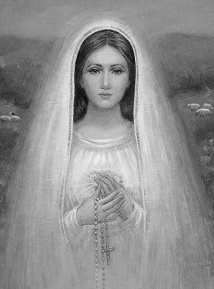 What
we have said thus far applies in general to all vocations. But since there are
different vocations within the Church, we must also say that each of these
projects Christ in a somewhat different manner. Each Christian must study how in
particular he is called to put on Christ. Essentially, of course, all put on
Christ in the same manner. Yet there are accidental differences according to the
vocation, work and individuals involved. For instance, the lay person, in
general, is called to a deeper involvement in temporal affairs than is the
religious.
What
we have said thus far applies in general to all vocations. But since there are
different vocations within the Church, we must also say that each of these
projects Christ in a somewhat different manner. Each Christian must study how in
particular he is called to put on Christ. Essentially, of course, all put on
Christ in the same manner. Yet there are accidental differences according to the
vocation, work and individuals involved. For instance, the lay person, in
general, is called to a deeper involvement in temporal affairs than is the
religious.
Each
member of Christ, according to his particular vocation, work and personality,
has something special to take away from the Mass.45
Each Christian, as he lives out the mystery of Christ, projects Christ to the
world in his own way. Each Christian, as he himself grows in Christ-likeness, is
also helping Christ to redeem the world in a manner commensurate with his total
Christian person. For holiness is necessarily apostolic whether the Christian at
any particular time is engaged in an external apostolate or not.
Each
Christian, according to Godís plan for him, must have a vital and dynamic
desire to help Christianize the whole world. Perhaps he can do very little
through direct, external apostolate. But his prayers and sacrifices Ė indeed,
his entire lifeĖcan touch the whole world. Through an intense Christian life
the individual can help Christ further the redemption of the family, the
business world, the social structure and the like. The Christian is called to
have this deep desire: to see the whole universe imprinted with the name of
Christ. How true it is to say that the Christianís vocation, rooted in the
liturgy, calls for deep involvement in this sacred activity.46
In schematic outline we have discussed the manner in which the baptized
Christian extends his Mass to his daily existence. As he so lives out his Mass,
he is becoming more Christlike. He becomes a more perfect priest and victim for
his next participation in the eucharistic sacrifice.47
The beautiful cycle which the Mass contains lies exposed before us. As part of
this cycle the Christian is intimately involved in the process of continued
redemption. The Mass is the center of the Christian life: "...the liturgy
is the summit toward which the activity of the Church is directed; at the same
time it is the fount from which all her power flows."48
October 20, 2000
I
give my heart to Jesus and Mary with you in love. I want to pray united to you
as a body all day. Yesterday as I prayed I realized how important it is we stay
united to the Mass the whole time we are praying. Great grace is released as we
stay united to the Mass and pray in union with the Masses being offered around
the world. Whenever we do the hourly prayers or pray the rosary or do God
ís
will in our activities we are so consciously aware of our union to the Mass
being celebrated at that moment. There is such grace that can be released from
our union with the Mass. Here is Luciaís
vision.
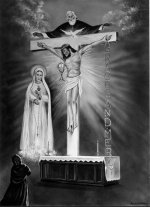
Whether
I am at the Mass so actively present or I am in my home or my car or in a
church, I want to be so united to the Masses going on around the world. I
realized as never before that so much grace could be released. This deep
connection to the Mass is so important so tremendous grace will be released. The
sacrifice is being offered through the hands of a priest. I pray and tremendous
grace can be released. I want to be so connected to this font of grace as the
Mass is being celebrated. I want my prayer to be most pure so I unite myself to
the pure and holy Hearts of Jesus and Mary. I want all I do to be a sacrifice
united to their pure and holy Hearts. I want the most tremendous grace possible
to be released from the offering of my life and my prayers so I unite so deeply
to this font of grace. I realized more than ever before in my life how Jesus is
Chief Priest and Victim. The priest is the instrument God uses. But in every
Mass, Christ Himself is celebrating through the priest. The Mass is so powerful
because it is Christ Who is the Chief Priest. We stand with Mary under the cross
and we beg God to release grace. Our every action should be cognitively united
to the Masses going on around the world. Great grace will be released from our
prayers and offerings.
|
Morning Offering
My
dear Father, I offer you this day all my prayers, works, joys, and
sufferings in union with Jesus in the Holy Sacrifice of the Mass
throughout the world, in the Holy Spirit.
I
unite with our Mother Mary, all the angels and saints, and all the
souls in purgatory to pray to the Father for myself, for each member
of my family, for my friends, for all people throughout the world, for
all the souls in purgatory, and for all other intentions of the sacred
Heart.
I
love You, Jesus, and I give You my heart. I love you, Mary, and I give
you my heart. Amen.
Imprimatur: Most Reverend Daniel
E. Pilarczyk, Archbishop of the Archdiocese of Cincinnati, January 22,
1997. (applies to this prayer only)
|
We
wish you to join with us in praying the prayers for the priests, the Church and
the world. We gather as a body praying especially at 6:30 daily, but some pray
at different times all day.
We
unite in our morning offering especially praying for the priests, the Church and
the world.
Prayer
manuals are available free of charge. Father Carter desired these prayer
chapters to be begun all over the earth to help bring about the Reign of the
Sacred Heart in all hearts.
Let
there be peace on earth and love and joy, please pray with us for the priests,
the Church and the world. Tapes and disks are available with Father Carter
praying the prayers.
|
"Jesus,
You show us Your Heart as symbol of Your life of love in all its
aspects, including Your most special love for each of us as unique
individuals. Out of Your great love for us, You died a brutal death,
nailed to the wood of the cross. Out of Your great love for us, You
rose gloriously from the dead.
"From
Your pierced Heart the Church with her life-giving Sacraments was
born. In the Eucharist, Crown and Center of the Churchís life, You
continue to give Yourself to us with the deepest, most tender, most
on-fire, most complete love.
"Jesus,
since in Your great love You give Yourself so completely to us, it is
only fitting that we make a gift to You in return. It is entirely
fitting that we give ourselves completely to You. Yes, we consecrate
ourselves to Your most loving Heart. Each of us says to You, O Lord,
our Savior and our Friend: ĎJesus, take me wholly, take me
completely to Your magnificent Heart. Out of love I give myself to
You. Live in and through me. In love You give Yourself completely to
me. In love and in a spirit of reparation, I want to give myself, with
the help of Your grace, entirely to You. Take me, Jesus, to an ever
closer union with the Father, in the Holy Spirit, with Mary my Mother
at my side. Pierced, Glorified, Eucharistic Heart of Jesus I place my
trust in You.í "
"Dear
Blessed Virgin Mary, I consecrate myself to your maternal and
Immaculate Heart, this Heart which is symbol of your life of love,
including your most special love for me as this unique individual. You
are the Mother of my Savior. You are also my Mother. In a return of
love, I give myself entirely to your motherly love and protection. You
followed Jesus perfectly. You are His first and perfect disciple.
Teach me to imitate you in the putting on of Christ. Be my motherly
intercessor so that, through your Immaculate Heart, I may be guided to
an ever closer union with the Pierced, Glorified, Eucharistic Heart of
Jesus, Chief Shepherd of the flock."
|
Many
of the laity pray for us priests, and consistently so. Is it not also fitting
that we priests pray for all our brothers in the priesthood, and consistently
so? There follows a prayer that can aid us in this endeavor.
"Lord
Jesus, Chief Shepherd of the Flock, we pray that in the great love and mercy of
Your Sacred Heart that You attend to all the needs of Your priest-shepherds
throughout the world. We ask that You draw back to Your Heart all those priests
who have seriously strayed from Your path, that You rekindle the desire for
holiness in the hearts of those priests who have become lukewarm, and that You
continue to give Your fervent priests the desire for the highest holiness.
United with Your Heart and Maryís Heart, we ask that You take this petition to
Your heavenly Father in the unity of the Holy Spirit. Amen".
The
above prayer is taken from the prayer manual of Shepherds of Christ Associates,
a facet of Shepherds of Christ Ministries. The associates are members of prayer
groups which meet regularly to pray for all the needs of the entire human
family, but most especially for priests. If you would like a copy, or copies, of
this prayer manual, and further, if you would like information on how to begin a
Shepherds of Christ prayer chapter, contact us at:
Shepherds of Christ
P.O. Box 193
Morrow, Ohio
45152-0193 U.S.A.
Phone (toll
free):1-888-211-3041, Phone: 1-513-932-4451
Fax: 1-513-932-6791
|
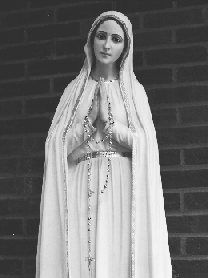
|
We make
rosaries for schools. Do you know anyone who can help us get more
rosaries for the schools? Last October we had orders for more than
80,000 rosaries.
|
- Scripture quotations are taken from The New Jerusalem Bible,
Doubleday.
- The Documents of Vatican II, "Constitution on the Sacred
Liturgy", America Press Edition, No. 17.
- Ibid., No. 48.
- Pope Pius XII, Encyclical Letter, Mystici Corporis, AAS, XXXV,
pp. 232-233.
- Pope Paul VI, Encyclical Letter, Mysterium Fidei, St. Paul Books
and Media, pp. 5, 25, 26.
- Cf. Karl Rahner, The Church and the Sacraments (New York: Herder
& Herder, 1963), p. 15.
- Casel has given the great impetus to the theological rediscovery of the
reality of mystery presence in the liturgy. Therefore, when we disagree
with Casel we in no way intend to detract from the greatness of his
contribution.
- Cf. Edward Schillebeeckx, Christ the Sacrament of the Encounter with
God (New York: Sheed & Ward, 1963), pp. 55-56.
- Ibid., pp. 58-60.
- F. X. Durrwell, The Resurrection (New York: Sheed & Ward,
1960), p. 59.
- St. Thomas Aquinas, S.T., II-II, q. 81, a. 4, ad 1.
- Cf. S. Lyonnet, "La Sotťriologie Paulinienne" in Robert and
Feuillet, Introduction ŗ la Bible, Vol. II (Tournai, Belgium:
Desclťe, 1959), p. 874.
- St. Augustine, City of God (New York: Fathers of the Church,
1954), Vol. 14, p. 123.
- Cf. Durrwell, Op. cit., p. 61.
- Cf. Lyonnet, Op. cit., pp. 871-872.
- Cf. Durrwell, Op. cit., p. 126.
- Cf. Bernard Cooke, Christian Sacraments and Christian Personality
(New York: Holt, Rinehart, and Winston, 1965), pp. 132-133.
- Bernard Cooke, "Synoptic Presentation of the Eucharist as Covenant
Sacrifice" in Theological Studies, Vol. 21 (1960), p. 12.
- Schillebeeckx, Op. cit., pp. 21-22.
- Durrwell, Op. cit., pp. 68-69. This "acceptance"
element of Christís sacrifice is an extremely important one, a fact
being shown through contemporary scriptural, theological and liturgical
studies. Two outstanding works which treat of the role of Christís
Resurrection in Godís redemptive plan are F. X. Durrwellís The
Resurrection and L. Cerfauxís Christ in the Theology of St. Paul.
- S. Lyonnet, "La valeur sotťriologique de la rťsurrection du
Christ selon saint Paul" in Gregorianum, Vol. 39 (1958), pp.
312-313. Translation taken from Theology Digest, Vol. 8 (1960), p. 92.
- J. Jungmann, "Eucharistic Piety" in Worship, Vol. 35
(1961), p. 416.
- Cf. Second Vatican Council, Constitution on the Liturgy, No. 48,
and Constitution on the Church, No. 10.
- Cf. Jungmann, Op. cit., p. 417.
- Paul VI, Mysterium Fidei, N.C.W.C. edition, Paragraph 31.
- Second Vatican Council, Constitution on the Liturgy, No. 14.
- Cf. Pierre Teilhard de Chardin, The Divine Milieu (New York:
Harper Torchbooks, 1965), p. 123. Cf. also Christopher Mooneyís
commentary, "The Body of Christ in the Writings of Teilhard de
Chardin" in Theological Studies, Vol. 25 (1964), p. 607.
- From a lecture of Teilhard de Chardin given in 1930, cited in Mooney, Loc.
cit.
- Pius XII, Mediator Dei, N.C.W.C. edition, Paragraph 34.
- J. Jungmann, Pastoral Liturgy (New York: Herder & Herder,
1962), p. 284.
- Durrwell, Op. cit., pp. 324-325.
- Cf. Mediator Dei, Paragraph 100.
- Cf. Ibid., Paragraph 81.
- J. Jungmann, The Mass of the Roman Rite (New York: Benziger,
1959), p. 146.
- Loc. cit.
- Constitution on the Church, No. 7.
- Dietrich von Hildebrand, Liturgy and Personality (Baltimore:
Helicon, 1960), p. 33.
- Cf. Karl Rahner, Nature and Grace (New York: Sheed & Ward,
1964), pp. 23f.
- Cf. Jungmann, "Eucharistic Piety" in Worship, Vol. 35
(1961), p. 419.
- F. X. Durrwell, In the Redeeming Christ (New York: Sheed &
Ward, 1963), p. 63.
- Karl Rahner, Spiritual Exercises (New York: Herder & Herder,
1965), p. 160.
- Schillebeeckx, Op. cit., p. 209.
- Cf. L. Cerfaux, Christ in the Theology of St. Paul (New York:
Herder & Herder, 1959), pp. 190-192.
- Durrwell, The Resurrection, p. 48.
- Cf. Karl Rahner, The Christian Commitment (New York: Sheed &
Ward, 1963), p. 168.
- Cf. Second Vatican Council, Constitution on the Church, No. 36.
- For a current treatment of the varied richness of the Eucharist, cf. J.
Wicks, "The Movement of Eucharistic Theology" in Chicago
Studies, Vol. 10 (1971), pp. 267-284.
- The Constitution on the Sacred Liturgy, No. 10.
|
website: http://www.SofC.org
E-Mail: info@SofC.org
2001, ISSUE TWO
Shepherds of Christ
Shepherds of Christ Ministries
P.O. Box 193
Morrow, Ohio 45152-0193
U.S.A.
Shepherds of Christ, a spirituality
newsletter for priests, is published bi-monthly by Shepherds of Christ
Ministries, P.O. Box 193, Morrow, Ohio 45152-0193. While distribution
is free of charge, donations are still very much appreciated.
Inquiries and comments are welcome, as are address changes and
addresses of the newly ordained. Permission to reproduce intact is
granted for non-commercial use. Editor Father Edward Carter S.J. was
Professor of Theology at Xavier University in Cincinnati, Ohio. John
Weickert is President. Good Shepherd illustration is by Brother Jerome
Pryor, S.J. Layout and design are by Joan Royce. Also dedicated to the
spiritual advancement of priests is a worldwide network of
lay/religious prayer chapters, Shepherds of Christ Associates,
headquartered at 2919 Shawhan Road, Morrow, Ohio 45152, U.S.A.,
telephone toll free 1-888-211-3041, fax 513-932-6791.
|
Messenger: Jesus asks us to pray for special things.
Spread the Blood of Jesus, Consecrate their hearts,
Cast the Devil far away, ask for the coming of the Holy
Spirit.
1) Pray for urgent intention, a special priest
and all involved.
2) Pray for Father Mike and Father Laurentin.
3) Pray for special Bishops and Archbishops
4) Pray for a special man and son,
and family and all involved.
5) Pray for all priests, Bishops and Cardinals
receiving the Newsletter.
Pray for grace for them to respond especially
by beginning prayer chapters.
6) Pray for the telephone operators.
7) Pray for communication and business in
general.
8) Pray for people to respond to fund letters.
9) Pray for money to circulate pictures.

|
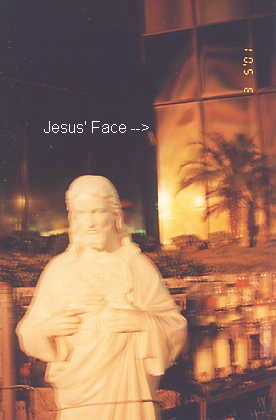
|
|
March 5, 2001 |
March 5, 2001 |
10) Pray for funds and grace.
11)
Pray for all Shepherds of Christ apostles,
handmaids, servants.
12)
Pray for availability Prayer manuals.
13) Pray for second priestly Newsletter Book.
14)
Pray for documentary and all involved.
15) Pray
for special intentions of our donors.
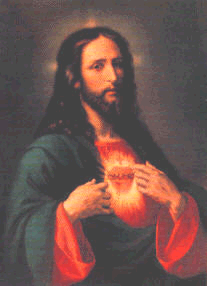
A PLEDGE FROM AN APOSTLE OF THE SACRED HEART
Messenger:
I am but a little speck on this earth,
but with His might He
can use me
to spread the
devotion to His
Most Sacred Heart.
Oh dear and precious Heart of Jesus
I give myself as
completely as
possible to Thee so
you will use
me to spread the
devotion to the
ends of the earth for
Your most
precious
Heart.
I am Rita your precious soul.
Use me to help to spread this burning
devotion
to the souls of this earth.
I am yours, take me, use me as you
will.
I surrender myself to you.
It is your might behind me, your power
that sends me. I am
an Apostle of
the Sacred Heart of
Jesus. I give
myself as completely
as possible to
Thee.
Sacred Heart of Jesus I place my
trust in Thee.
Father hear us please. We beg through
the intercession of Father Carter
and Our Lady of Clearwater that
prayer chapters are started all over
the world and the Priestly Newsletter
gets there immediately with the
Prayer Manual.
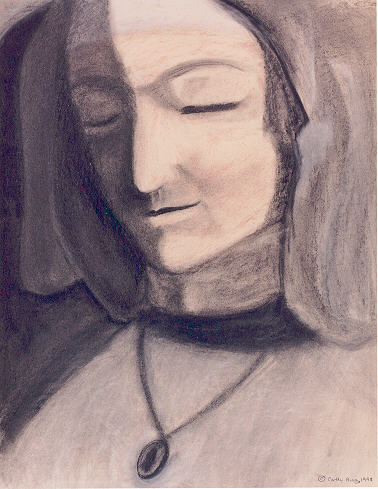 Mary's Message
from the Rosary of August 27, 1996
Mary's Message
from the Rosary of August 27, 1996
Mary speaks: I stood beneath the cross of my Son, and
my Heart was in such pain for I saw Him before my eyes. I saw Him covered with blood. I
saw Him die. My Heart, my children, my Heart to watch my Son, but my Heart, my Heart, how
I suffered for my little children of the world that give in to this world and give up the
love of my Son. O my little children of light, I give you this message. Carry this light
into the darkness for your Mother Mary, for I stood beneath the cross and I cried. I cried
for the little ones. I cried for the young ones, the ones that do not care and will lose
their souls. How do I make you see for you will not listen to me? What can I do? I come. I
appear. I beg. I plead. I give you these gifts from my Son, and you reject me. I do not
deliver messages very often anymore for I have been ignored. The message is the same. You
do not read the messages I have given to you. Please help me. Help the little children. I
appear. I appear. I appear, and I am ignored. I stood beneath the cross, and I cried. I
cried, and my Heart was in such anguish for my little children, for I am searching for
them this day as I searched for the Child Jesus. Please, please help me. I cannot hold
back the hand of my Son any longer. I am Mary, your Mother. I ask you to help my children.
You are my children of light.
Song: O Lady of Light, shining so bright, be with us this
day, guiding our way, O Lady, O Lady of Light. O Lady of Light, shining so
bright, be with us this day, guiding our way, O Lady, O Lady of Light. O Lady of
Light, shining so bright, be with us this day, guiding our way, O Lady, O Lady of Light.
Mary speaks: I appear to you as Our Mother of
Sorrows. I appear to you as Our Mother of Sorrows. I appear to you as Our Mother of
Sorrows.
end of Mary's Message
A Note from the President of Shepherds of Christ:
If you are devoted to Our Lady's rosary, we need your help! A member of
our ministry is very devoted to Our Blessed Mother and he is helping to teach us how to
grow our volunteer rosary makers. He estimates that we will need approximately $37,000
this year for beads alone! This translates into 22,339,500 rosary beads (yes, 22 million
beads) assembled by volunteers into 378 thousand rosaries. The biggest users of our
rosaries are the Catholic schools, who requested more than 100,000 rosaries last year.
Can you help us? I appeal to you for funds, whether large or small. We
give because we love God, we love our Blessed Mother, and we love souls. We will accept
gifts in many forms, besides cash or check donations, we can receive gifts directly in the
form of stocks or property. These gifts can offer large tax advantages to the donor and
increase the monetary value of the gift to us. Also if you can help assemble rosaries we
need your help! If you can help us in anyway, please call or write us. God Bless!
I love you,
John Weickert
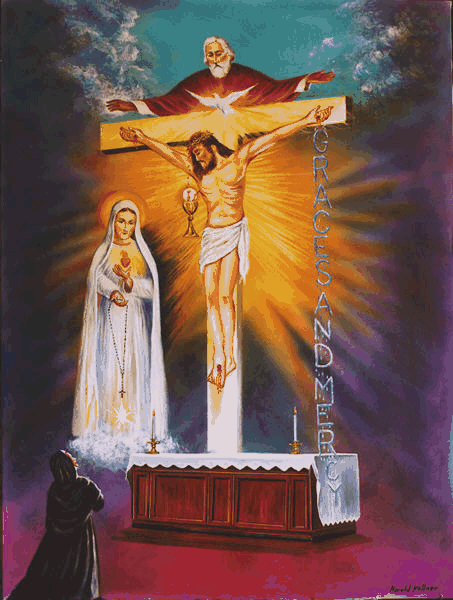
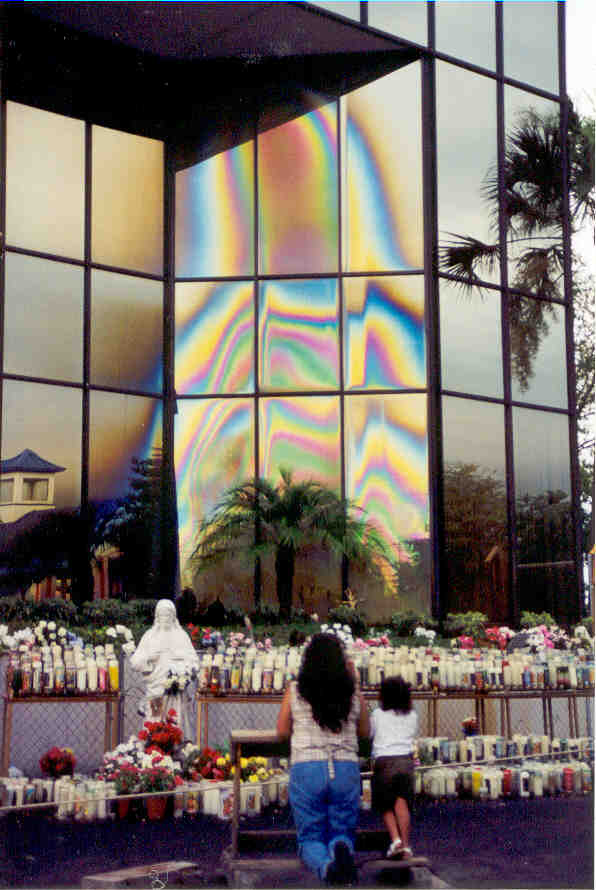
A rosary can be used to pray for healing. It is powerful to unite our
prayers to the Holy Sacrifice of the Mass and pray through the powerful intercession of
Our Lady of Clearwater.
In times of trouble, for special prayer, we can use our rosary and pray as
follows.
A Rosary for Healing or for Someone with Cancer.
On one Hail Mary bead or as many as you desire, say:
May God
heal
through the intercession of Our Lady of Clearwater in union with the Mass and all the
Masses being celebrated around the world.
Pray the Hail Mary or Hail Mary's then pray this after the Hail Mary.
May the cancer be uprooted and thrown into the sea.
We believe with all our hearts.
After the Glory Be — pray the following petition.
May
be healed through the intercession of Our Lady of Clearwater if it be the holy will of
God.
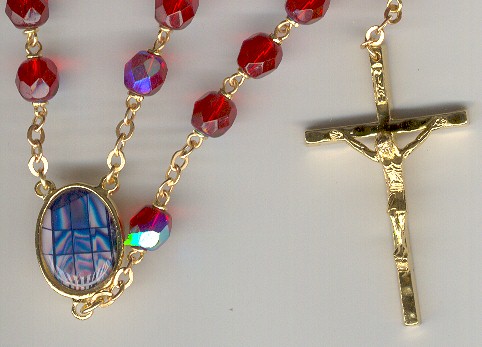 |
Note: You can look at Mary on the image rosary while you pray this
rosary. |
 |
Note: The above section can be printed out from a PDF file, and you can pray the rosary looking at
the pictures.
 |
December 17, 2000, Mary speaks:
Help me to circulate my red and blue
Rosary Books and the
prayers my Son gives to you.
This is a gift we give you.
All the revelations are gifts given to you.
My Son is the Light of the World.
He is Jesus born in a stable.
Will you help me?
He is the Light of the World. Help me, help me
reach my children of the world. |
 |
To order your Rosary Book fill out this form and send your donation to
Shepherds of Christ Ministries, PO Box 193, Morrow, Ohio 45152-0193, Telephone: (toll
free) 1-888-211-3041 or (513) 932-4451.
Name: _________________ Street:
_____________________________
City: _________________
State: _________________ Zip: ________
Donation price: $7 A $15 A $25
A $50 A $100 A Other $_____ A
Messenger: CAN YOU HELP US BY GIVING US ROSARIES FOR THE
SCHOOLS REQUESTING THEM?
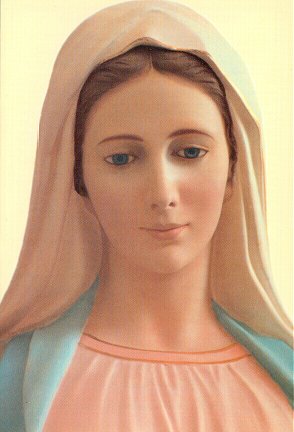
Mary speaks: PLEASE MAKE WALTER'S ROSARIES. THE
SCHOOLS WANT ROSARIES AND THERE ARE NOT ANY ROSARIES LEFT.
Messenger: Pray for Ron, Fernando and Perry.
Prayer List for apostles for interior use in the Movement. Pray
hourly.
Spread the Blood of Jesus on everyone involved with Shepherds of
Christ in any way, consecrate their hearts, cast the devil out, pray for coming of the
Holy Spirit in a special way for all people involved on this list.
Please pray for one new very important intention.
Pray for the 5 urgent intentions.
Pray for the Pope and everyone we need to help us.
* Pray for the priestly newsletter, for funds for it and for all involved.
Pray for the taping of the priestly newsletter.
Pray for the reproduction of disks.
Pray for the Newsletter that went from China and Eden Prairie.
Pray for priests receiving the Newsletter for grace.
Pray for fund letters, all donors, and getting the right names.
Pray for setting up telephone communications at the Morrow Center for priests receiving
the newsletter and wanting the Prayer Manuals.
Pray for open communications within the Shepherds of Christ Ministries.
Consecrate Hearts of all Priests in the world saying Mass today.
Pray to see the vision of the Reign of the Sacred Heart and the Era of Peace.
Pray for the prison ministry.
Pray for Michael B.
Pray for the Documentary.
Pray for all mankind, Church and the world.
Pray to make amends to God for the sins of the men of this earth.
Pray to make reparation to the Hearts of Jesus and Mary.
Pray for Don, Don, Mike, Bob, Bob, Dave, Reggie, Bush, all donors and those who Jesus
wants to help us financially.
Pray for Father Carter and the Jesuits, the people at Colombiere.
* Pray for 2 special priests.
* Pray for funds and grace.
Pray for designated priests, Fr. Mike, Fr. Laurentin, Fr. Joe, Fr. Lou B., Fr. Jim, Fr.
Willig, Fr. Smith, Fr. Ken, Fr. Sevilla and all priests involved in the Imprimaturs
translations including all bishops and all bishops over us. Pray for Bishop Ed, Fr. Don,
Father at Tuesday Masses, Fr. Tom, Fr. Bill, all priests involved with Walter, Fr. Hagee
and special priests, priests who help us in China, and priests who help us in Florida.
Pray for Father's sister Merle, for all of us servants, handmaids, apostles and vocations
to all 7 categories.
Pray for the Internet team and the daily messages.
Pray for people reading the Internet.
Pray for prayer book, Mass Book II, and Daily Message Books.
Pray for all covers, pray for Cathy.
Pray for the elected officials.
Pray for an audience with the Pope.
Pray for all Jesuits involved, all those over us.
Pray for Mike and Dan.
Pray for the rights to the books, pray for Jesuits in Father's house.
Pray for the process of getting Father's books on the Internet.
Pray for money to reprint the books.
Pray for the Imprimatur on the Priestly Newsletter Book II.
Pray we can send it to all bishops and Jesuits.
Pray for Fernando, Ron, Joseph, Peter, Ed, Jane, Sonia, Don, Sue & Ken.
Pray for Perry and family and discernment.
Pray for all sub-centers and all out-of-state rosaries; Denver, Iowa, Pennsylvania,
Toledo, St. Louis, Memphis and California.
Pray for the sisters' mailing, nursing home mailing, bus mailing.
Pray for Genevieve's daughter and Sheila's mom and the repose of the soul of Jerry's dad.
Pray for Paul and Joan discernment.
Pray for B & M and Tina and Terry, all printing jobs, companies involved.
Pray for 5th, the 13th, the 17th.
Pray hourly for the Rosary on the 5th & all attending and those traveling to Florida.
Pray for building up of Morrow, Ohio, Dale, Indiana, Toledo, Ohio, Sidney, Ohio, Iowa, and
other sub-centers.
Pray for the Holy Spirit Center and all involved.
Pray for all our families, children in school, college mailing.
Pray for lots and lots of people to help us get prayer manuals and pictures.
Pray for Rosary Factory and rosary beads.
Pray for lots of rosary makers and rosaries for the schools.
Pray for Paul C., Margaret Mary, Steve and Sheila, Monica, Angie, Marian, Cathy, Joe,
Nick, Mary, Emily, Joe, Doris, Glaci, Dunkers, Joan R., Morgan, Mark, Walter, Janice, Mike
A., Margaret, Ron, Harold, Scott, Nathan, Don, Rosalie, and Dennis.
Pray for everyone who has asked us to pray for them.
Pray for Steve and Sheila and repairs.
Pray for Fred doing the paper and all involved in priestly "start-up".
Please pray for all Shepherds of Christ children.
Pray for Victor's son, Michael. (Victor and Frances)
Pray for Delores and organization of writings and other material.
Last revised March 7, 2001
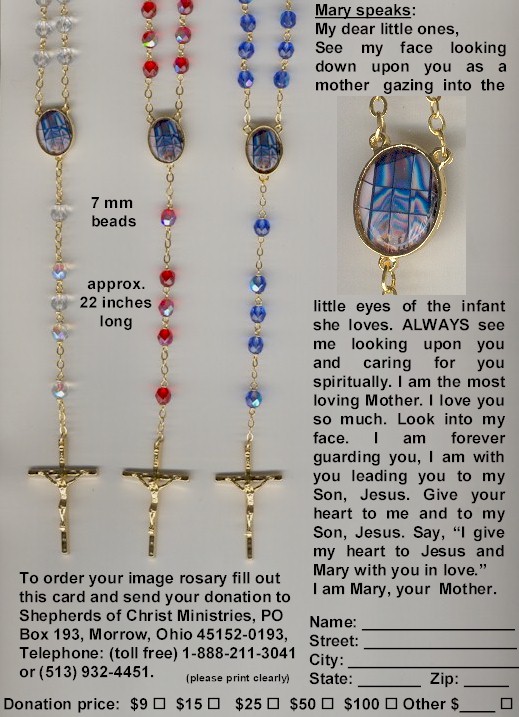
(Please copy and pass out to family and friends.)
MY
VALENTINE FOR JESUS AND MARY
AND THE WORLD
I _________________ give my
heart to
You Jesus and Mary on this day
_________________
I promise to help spread the devotion to
the Hearts of Jesus and Mary.
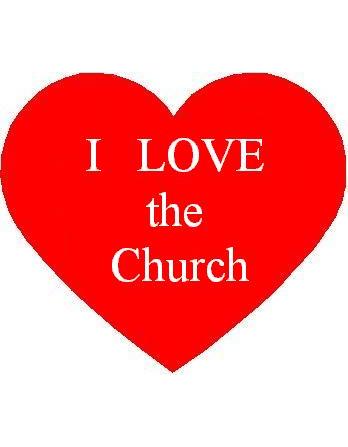   |
Question for married
couples and others in intimate relationships:
Q: When we suffer trials, how can we share these
trials with each other in the greatest love?
Table of Contents
Previous
Daily Message
Main Shepherds of Christ Page
 Copyright © 2001 Shepherds of Christ.
Copyright © 2001 Shepherds of Christ.
Rights for non-commercial reproduction granted:
May be copied in its entirety, but neither re-typed nor edited.
Translations are welcome but they must be reviewed for moral and
theological accuracy by a
source approved by Shepherds of Christ Ministries
before any distribution takes place.
Please contact us for more information.
All scripture quotes are from the New Jerusalem Bible, July 1990, published by Doubleday.
Revised: June 21, 2001
URL: http://www.SofC.org
Contact Information for Shepherds of Christ
Email: info@SofC.org
Shepherds of Christ Ministries
PO Box 193
Morrow, Ohio 45152-0193
Telephone: (toll free) 1-888-211-3041 or (513) 932-4451
FAX: (513) 932-6791











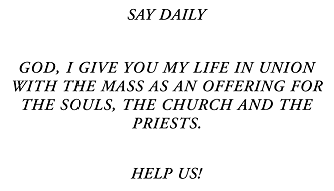
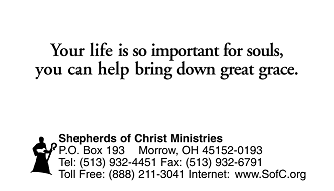
 The
Son of God became Man for our salvation. Yes, He became incarnate. He took to
Himself a real human nature. Because Jesus possessed a real human nature, He
could die for us. As the Good Shepherd, He has laid down His life for us, His
sheep.
The
Son of God became Man for our salvation. Yes, He became incarnate. He took to
Himself a real human nature. Because Jesus possessed a real human nature, He
could die for us. As the Good Shepherd, He has laid down His life for us, His
sheep.
 Some
day if we love and serve God we will be with Him in heaven. Our life is so short
compared to eternity. Here today, gone tomorrow. All that remains is how we
choose to live, for God or against God!
Some
day if we love and serve God we will be with Him in heaven. Our life is so short
compared to eternity. Here today, gone tomorrow. All that remains is how we
choose to live, for God or against God! Sky
and earth will pass away, but my words will never pass away. (Luke 21:33)
Sky
and earth will pass away, but my words will never pass away. (Luke 21:33)
 First
Friday, March 6, 1998
First
Friday, March 6, 1998  Man
directs himself to God by the virtue of religion. This is not to say that this
particular virtue ranks above the theological virtues of faith, hope and
charity. These are the most excellent, since they unite man directly to God. We
are merely stating that the virtue of religion directs all manís actions to
the honor of God.11
Man
directs himself to God by the virtue of religion. This is not to say that this
particular virtue ranks above the theological virtues of faith, hope and
charity. These are the most excellent, since they unite man directly to God. We
are merely stating that the virtue of religion directs all manís actions to
the honor of God.11 What
we have said thus far applies in general to all vocations. But since there are
different vocations within the Church, we must also say that each of these
projects Christ in a somewhat different manner. Each Christian must study how in
particular he is called to put on Christ. Essentially, of course, all put on
Christ in the same manner. Yet there are accidental differences according to the
vocation, work and individuals involved. For instance, the lay person, in
general, is called to a deeper involvement in temporal affairs than is the
religious.
What
we have said thus far applies in general to all vocations. But since there are
different vocations within the Church, we must also say that each of these
projects Christ in a somewhat different manner. Each Christian must study how in
particular he is called to put on Christ. Essentially, of course, all put on
Christ in the same manner. Yet there are accidental differences according to the
vocation, work and individuals involved. For instance, the lay person, in
general, is called to a deeper involvement in temporal affairs than is the
religious.
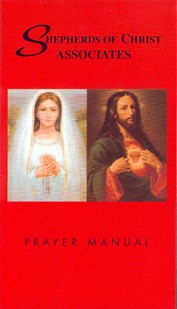




 Mary's Message
from the Rosary of August 27, 1996
Mary's Message
from the Rosary of August 27, 1996









